Circumnavigating Spitsbergen
In the realm of the polar bear.
Request a quote
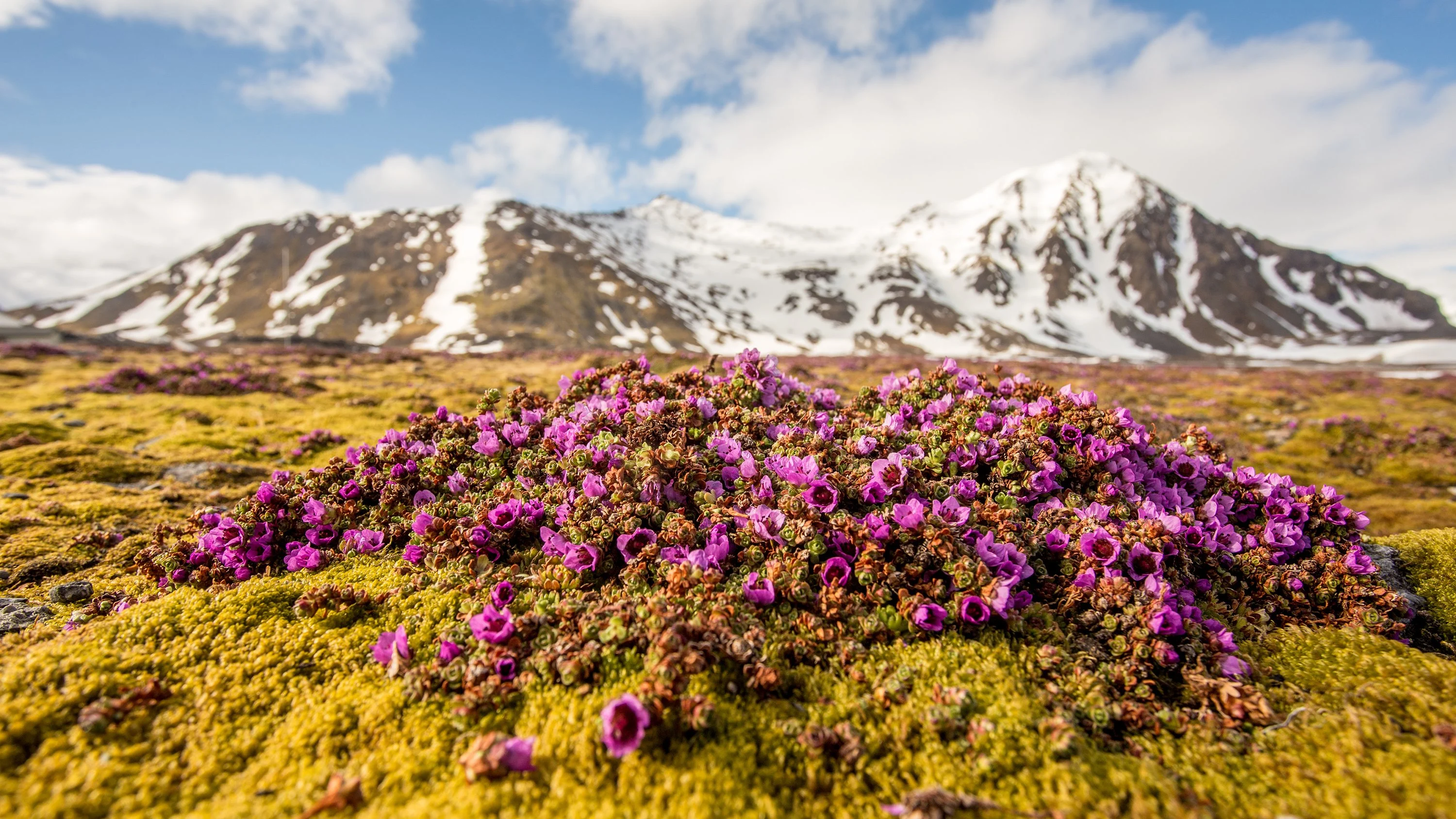

Cruise Overview
Discover incredible arctic scenery and wildlife under the midnight sun.
Discover vast landscapes of mighty glaciers, peaceful fjords and Arctic wildlife under the enchanting Midnight Sun.
Explore Longyearbyen and Northwest Spitsbergen National Park.
The Midnight Sun offers long, leisurely days, and provides perfect light for photographing incredible High Arctic scenery and wildlife.
Land of the polar bear
Starting from Oslo, you‘ll fly to Longyearbyen, where your adventure continues at sea. We then sail into Northwest Spitsbergen National Park. Take in the stunning Arctic scenery as we scout for polar bears, Arctic foxes, and Svalbard reindeer. You’ll also have the chance to see colonies of Brünnich’s guillemot and kittiwakes.
Crossing the 80th parallel north
We plan to circumnavigate Spitsbergen and attempt to sail beyond the 80th parallel north, if conditions permit. You’ll see awe-inspiring nature and wildlife, along with the breathtaking Hornsund mountains, before we cruise toward stunning Isfjord and back to cozy Longyearbyen.
Know before you go
Practical information you need to know
- Expedition Health & Safety
- Travel Entry Requirements
- What to pack?
- Frequently Asked Questions About Life on Board
Health and Safety
Health & Safety Onboard
The safety of our guests, our employees, and the communities we visit is our top priority. This is why we have partnered with leading experts in health and safety to design and implement protocols/procedures across our expedition fleet.
Searching for
Available dates.
We'll help you plan where to go, when to visit and how long to stay

Explore cosmopolitan Oslo
Enjoy time in Oslo before flying to Svalbard
Your expedition begins in Oslo, Norway’s fjord-side capital.
With its rich history and fashionable art scene, Oslo is a fascinating city. You’ll find museums, galleries, and breathtaking architecture, including the beautiful Opera House and new Munch Museum.
Take a stroll in the Ekebergparken sculpture park, visit Akershus Fortress or relax in a floating sauna. Explore modern Sørenga and enjoy urban beach life or try New Nordic cuisine before spending the night in your airport hotel.

Longyearbyen adventures
Explore colorful Longyearbyen
After your morning flight to Longyearbyen, it’s time to explore the world's northernmost town, a colorful frontier settlement where people are outnumbered by snowmobiles.
Longyearbyen is perfect for exploring on foot. Stroll down the main street and you might see Svalbard reindeer saunter by. Although wild, they're curious and tame.
Before boarding your ship in the afternoon and continuing your Arctic discovery, join an included excursion and get a glimpse of this amazing polar bear–inspired region at the top of the world.

Expedition days
Experience pristine Arctic wilderness
Over the next three days, you’ll explore the natural beauty and rugged tundra of Northwest Spitsbergen National Park. Surrounded by steep mountains, stark glaciers, and beautiful offshore islands, we’ll scan for Arctic animals, including whales, seals, walruses, and reindeer. If we’re really lucky, we might even see the elusive polar bear hunting on the ice. In stunning Kongsfjord, you may see glaciers calving into the sea.
Be ready for adventure – we’ll seize any opportunity to launch our kayaks or use our small boats (RIBs) to go ashore to hike or help in a beach clean-up.

Exploring the east
Scouting for polar bears, seabirds, and walruses
The frozen seascape of eastern Svalbard is home to the archipelago’s largest population of polar bears. We have high hopes you’ll see this elusive animal over the next two days. We will also scout for walrus and colonies of Brünnich’s guillemots and other seabirds in the Hinlopen Strait. We may head south to Freemansundet and Kapp Lee or take our small boats (RIBs) to Edgeøya or Barentsøya.
Your Expedition Team will set the daily itinerary. They’ll monitor local ice and weather conditions to take you on exhilarating landings, hikes, and kayaking tours.

Beautiful Hornsund
Majestic glaciers, rich vegetation, and seabirds
As we sail toward the southernmost tip of Spitsbergen, we’ll enter Hornsund, one of Svalbard’s most beautiful fjords. Rich, colorful vegetation transforms into towering mountains along this picturesque waterway. Head out on deck to spot seals and whales, admire Mount Hornsundtind, and watch glaciers calving into the sea.
The green patches of land you’ll see here are fertilized by little auk colonies. This in turn attracts Svalbard reindeer and Arctic foxes, so keep your eyes peeled. In the evening, we’ll journey north toward Isfjord, past beautiful Bellsund.

Astonishing Isfjord
Witness living history and ecology
Our Svalbard circumnavigation continues into Isfjord’s lush fjord system, where you’ll see immense, glacier-carved valleys rich in wildlife, vegetation, and human history.
To the north, Alkhornet is home to guillemots, kittiwakes, Svalbard reindeer, and Arctic foxes. Clear traces of the area’s whaling and hunting past are visible on beaches and in bays. Farther south, we’ll pass the former Isfjord Radio satellite communication station, which is now one of the world’s most beautifully situated hotels.
Today’s activities will be determined by the ever-changing weather conditions in Isfjord. Each day, your Expedition Team will decide on the best options for exploring.

Return to Longyearbyen
A final day on top of the world
Your Arctic adventure comes to an end back in Longyearbyen. You’ll return home knowing more about Arctic animals, history, polar ice, and climate change than when you arrived. You’ll also have lifelong memories from this incredible experience.
If you have time before your flight back to Oslo, you can discover more of Longyearbyen and do a spot of shopping – perhaps a warm Svalbard sweater.

End your adventure in Oslo
Time to say goodbye
After breakfast, it’s time to say goodbye as the voyage comes to an end. Feel free to explore some more of Oslo city if you have time before your flight back home.
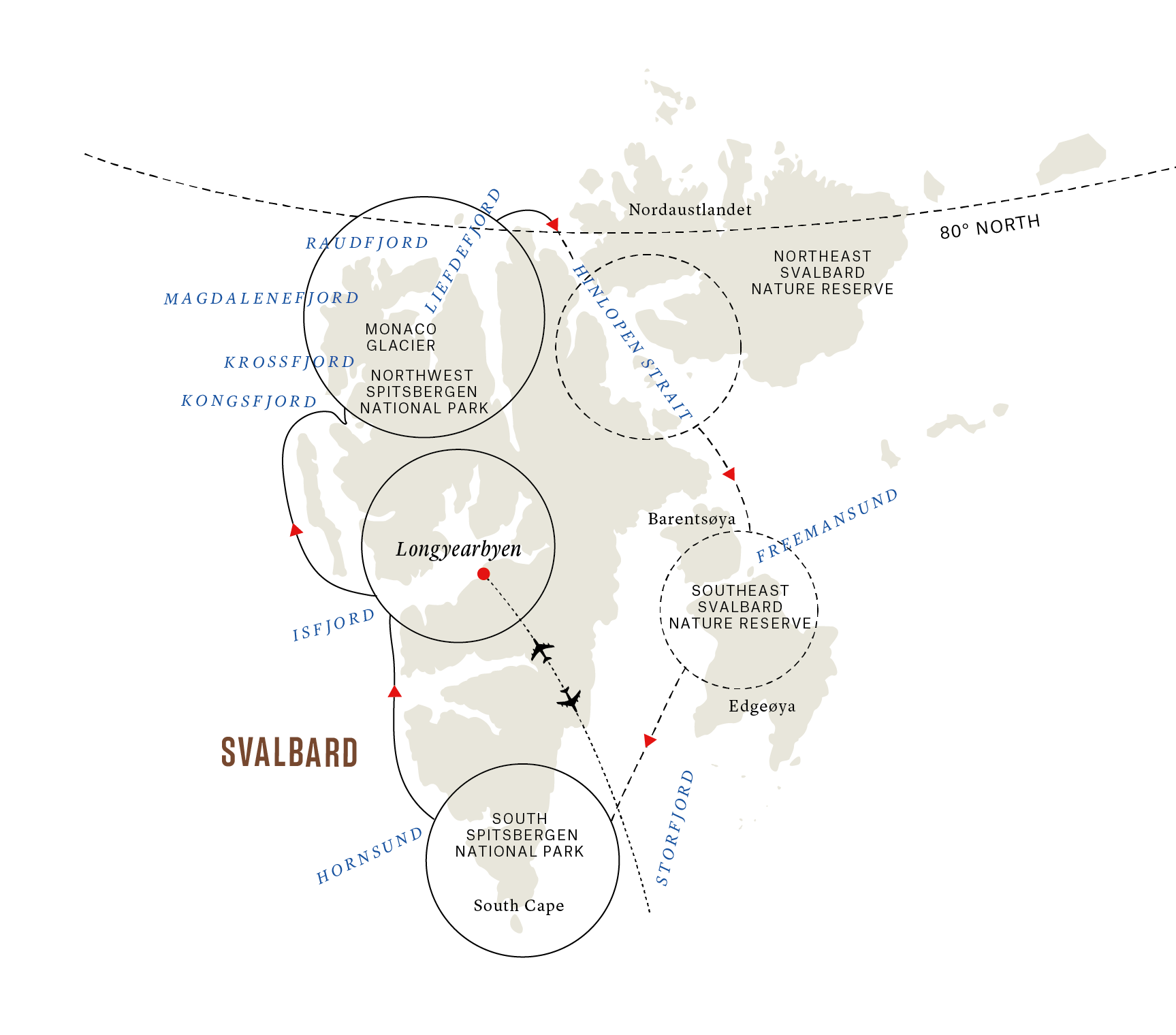
- - - Attempted route, ice conditions dependent
Our Attempts are voyages where we challenge the elements in true expedition style. As we explore these remote and captivating areas in a safe way, our adventure will ultimately be guided by nature. If weather, sea or ice conditions do not allow our planned navigation, our experienced crew will deliver an adapted itinerary. Flexibility and our deep knowledge of the area combine to give you an amazing exploration experience.
What's included
- Flights in economy class between Oslo and Longyearbyen
- Overnights in Oslo before and after the expedition cruise, including dinner and breakfast
- All transfers in Longyearbyen include an excursion before the expedition cruise
Expedition Cruise
- Stay in a cabin of your choice
- Breakfast, lunch, and dinner, including beverages* in the Aune restaurant
- The Lindstrøm À la carte restaurant is included for suite guests (on MS Fram only)
- Complimentary tea and coffee
- Complimentary Wi-Fi on board†
- Complimentary reusable water bottle
- English-speaking Expedition Team who organize and guide activities, both on board and ashore
- Range of included activities
Onboard activities
- In-depth lectures and discussions hosted by experts on the Expedition Team
- Full use of our Science Center, extensive library, and advanced biological and geological equipment
- The Citizen Science Program allows guests to contribute to ongoing scientific research projects.
- Our onboard professional photographer will give photography tips and teach techniques for capturing landscape and wildlife photos.
- The ship has hot tubs, a sauna with a view, and a gym.
- Join informal gatherings with the crew for daily briefings.
Landing activities
- Escorted landings with small boats (RIBs)
- Loan of boots, trekking poles, and all equipment needed for the activities
- Complimentary wind- and water-resistant expedition jacket
- Expedition photographers will be on hand to assist you.
- All planned activities are subject to weather and ice conditions
- Excursions and activities are subject to change
- Please ensure you meet all entry and boarding requirements
- No gratuities are expected
- Depending on your individual flight times, additional overnights might be necessary (not included)
What's not included
International flights
Additional overnight(s) if required due to international flight timings
Travel protection
Baggage handling
Optional shore excursions with our local partners
Optional small-group activities with our Expedition Team
Special offers
Expedition exclusive cost savings and rare opportunities.
* Certain offers may not be combinable, up to two savings opportunities except where noted otherwise
Galápagos is Better Together: Save up to 50%
With interconnected cabins and a variety of activities for all ages, HX offers the best way to experience the Galápagos with friends and family. Swim and snorkel, dine in style, and save up to 50% when you book by June 30, 2024!
37 days left to take advantage of our best price guarantee
Solo Traveler Benefit!
For a limited time, solo travelers pay no single supplement* on select expedition cruises to Alaska, Antarctica, the Galápagos Islands, Greenland, Iceland, Norway, and more!
38 days left to take advantage of our best price guarantee
Set sail in style with our limited-time suite offer
Save an additional 5% when you book a suite before June 30, 2024.
36 days left to take advantage of our best price guarantee
Included Programs
It's a mixture of adventure activities for individuals of all ages
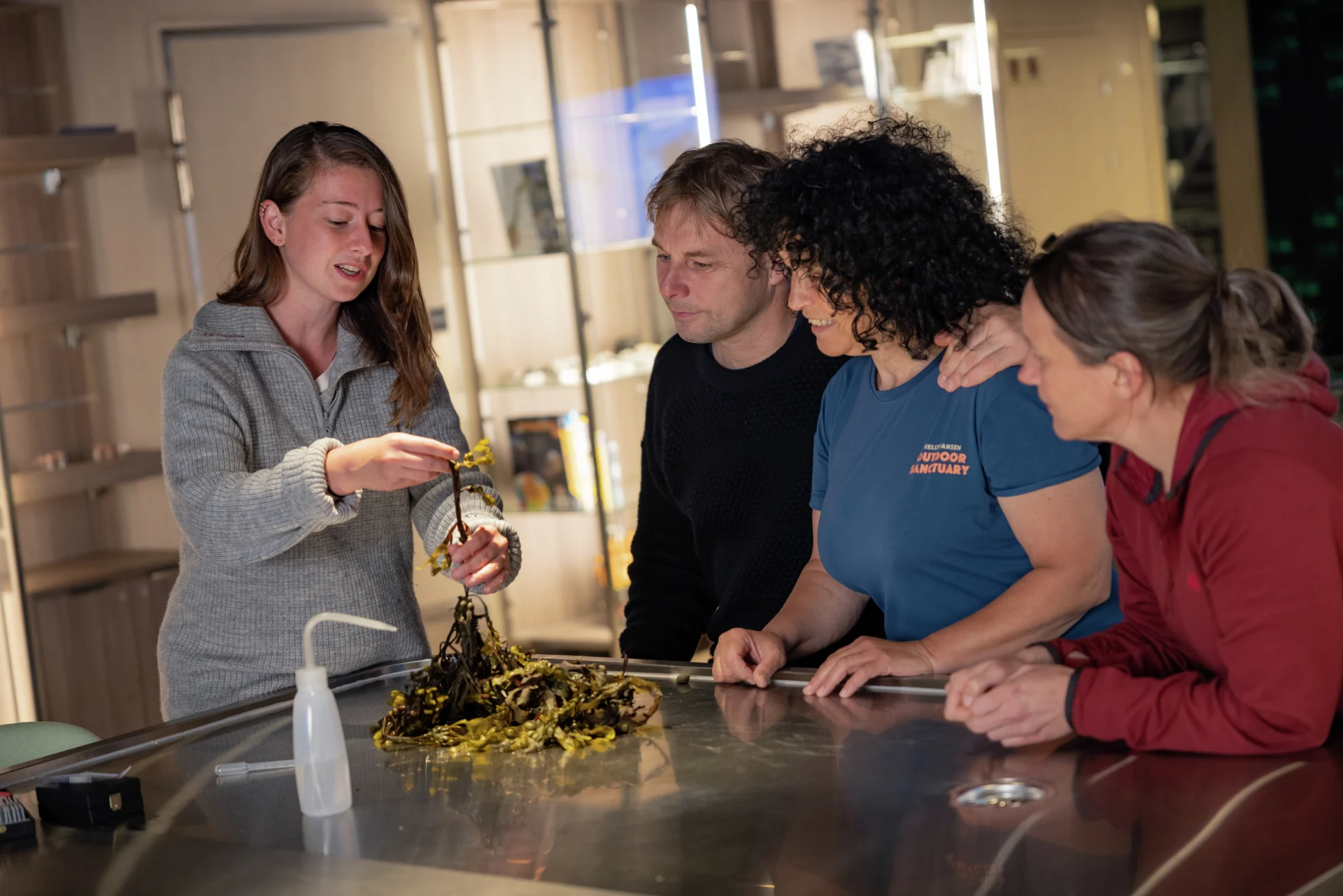
Onboard Science Program
Our Science Program has one goal: to increase your curiosity, knowledge and interest of the areas you are sailing to.
Our expedition ships serve as the perfect platform for scientific research; with access to remote regions of the world and onboard experts, we can provide invaluable data to the scientific community—with help from our guests!
We invite our guests to participate in science activities, developing a greater understanding of the region in which they travel, becoming true ambassadors, and returning home to champion the protection of our planet's most fragile ecosystems.
The core of the Citizen Science programs
Delivery of our own lecture program.
Interacting with guests in our Science Centers to reinforce the lecture program with practical hands-on guest experiences.
Citizen science program involving guests in programs for third-party organizations.
Carrying scientific equipment for sample collection on behalf of research institutes.
Hosting scientific personnel on board to conduct collaborative science programs.
Examples of Scientific Research Onboard
Seabird Distribution with the Antarctic Site Inventory — Surveys throughout the Antarctic Peninsula help scientists understand how seabirds are using different habitats and provide valuable information about their life cycles.
Cloud Observations with the Globe Program — By observing and recording cloud cover timed to NASA satellite fly-overs, guests can help scientists understand how surface and air temperature are affected by cloud cover, and how clouds will respond to a changing climate.
Happywhale — We assist in tracking individual whales throughout our world’s oceans by harnessing the power of whale watching enthusiasts - our guests - expanding our scientific knowledge of their behavior and distribution.
Sea Leopard Project — A non-profit study aimed at a better understanding of the behavior, ecology, and population dynamics of leopard seals on the Antarctic Peninsula to promote their conservation and safe human-seal interactions.
Fjord Phyto — Study phytoplankton to better understand how they respond to water temperature changes in the polar regions, providing a key to help mitigate future environmental impacts.
Science Center
Join the Expedition Team here for a range of lectures, photography workshops, and Citizen Science Projects. The area also features scientific and educational equipment, such as microscopes and interactive maps.
Lecture Hall
In-depth talks on history, climate change, sustainability, wildlife, Earth science, culture, and other topics specific to the destination you are visiting are held here. Learning more about each subject is certain to enhance your expedition experience.
Webinar: Science Program
Our Science Program has one goal: To increase your curiosity, knowledge and interest of the areas to which you are sailing.
In this webinar you can learn more about:
What the Science Program is about
Learning from the experts on board
Facilities, equipment and activities
Citizen Science research projects- and how you can contribute
Speaker: Verena Meraldi
Related cruises
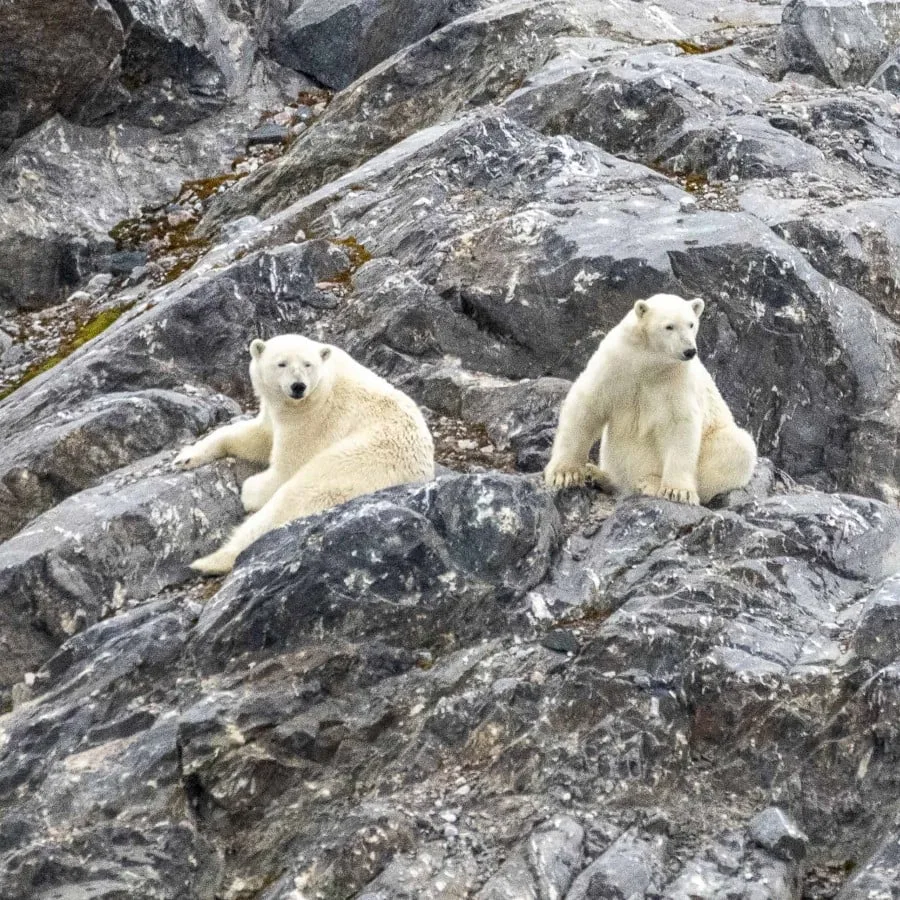
Circumnavigating Spitsbergen | In the Realm of the Polar Bear | 2024
Departure Dates
Jun 22, 24, Jun 29, 24 + 3 more departures
Price from $12,299
MS Fram MS Spitsbergen
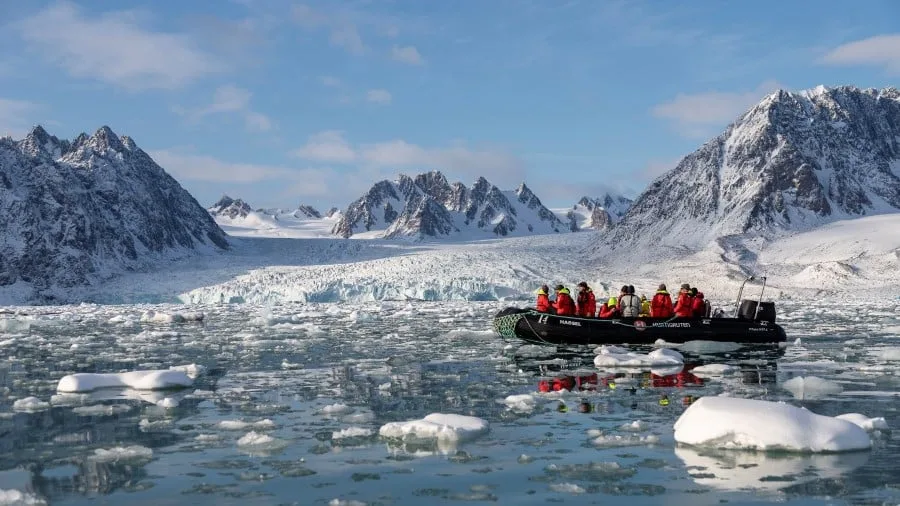
Circumnavigating Svalbard — The Ultimate Expedition
Jul 8, 24, Aug 12, 24 + 2 more departures
Price from $15,470
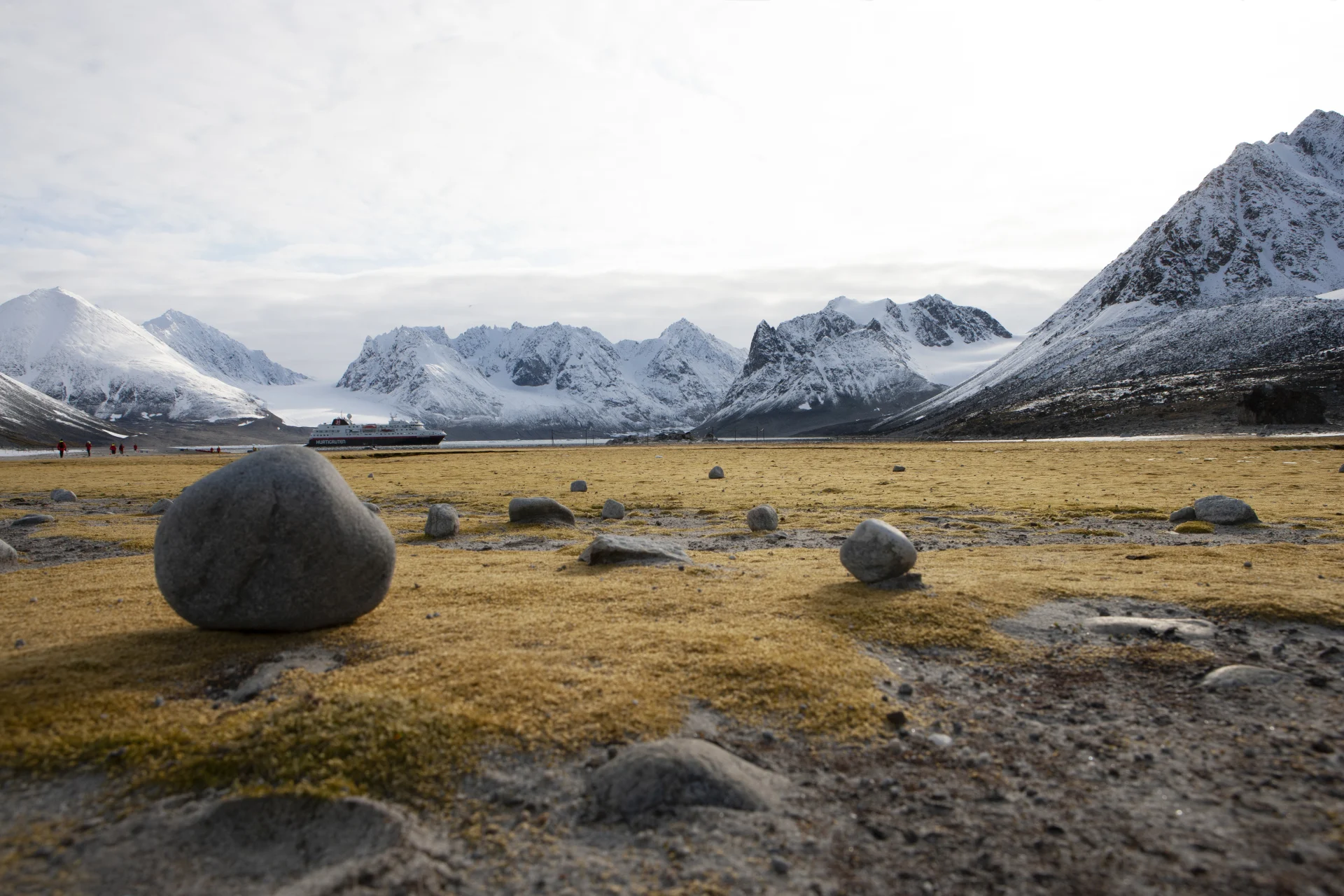
Sign up for our newsletter
Be the first to hear about our latest offers, exciting itineraries and inspirational articles.
Featured Yachts
Worldwide Search
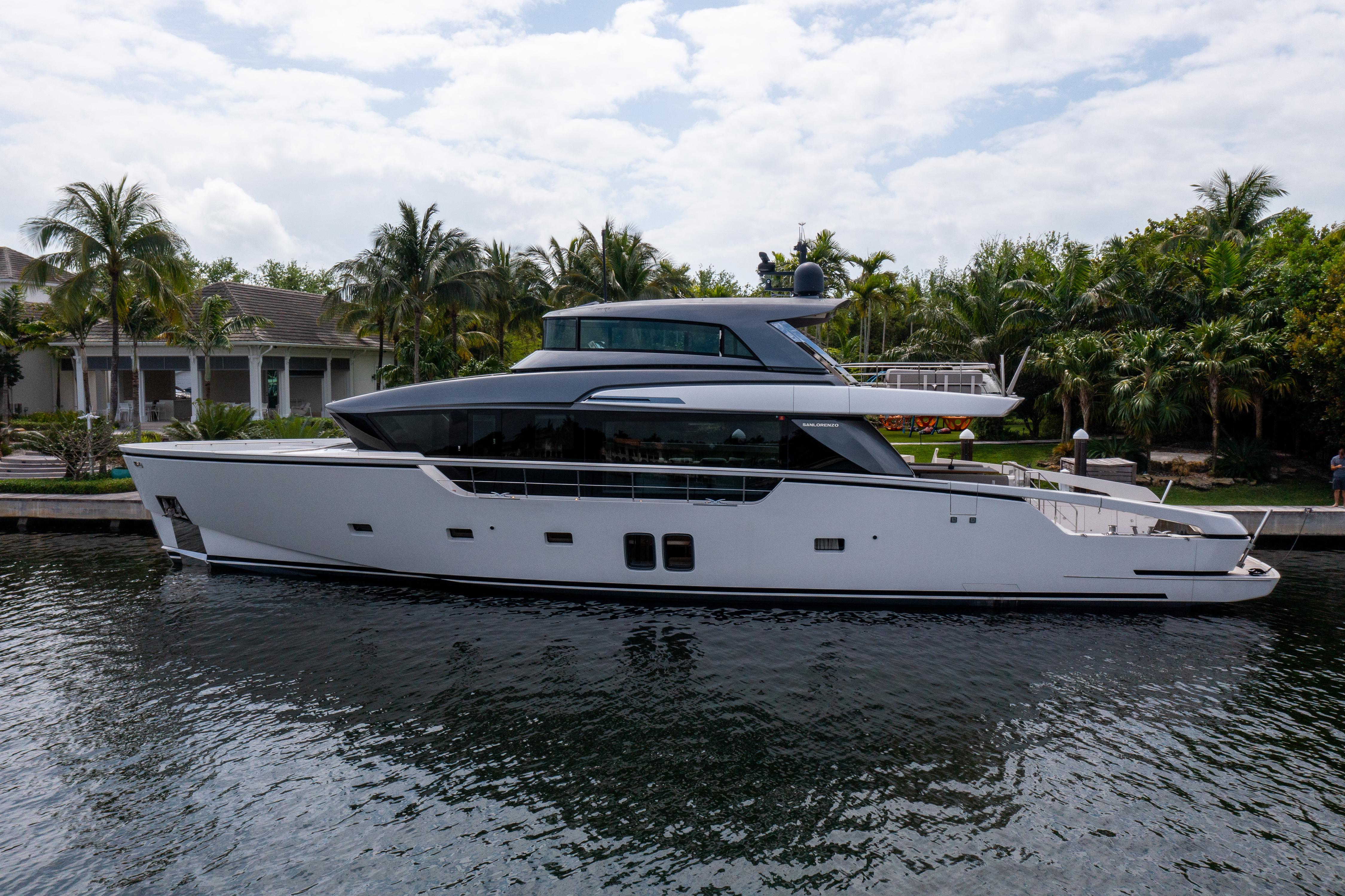
2019 Sanlorenzo 88

SHARE THIS YACHT

David Walters Yachts
Get in touch with a broker.

NEW TO THE MARKET. Polar Bear is very well kept, one owner and never chartered with only 520 hours.
more information to come.
This listing is courtesy of the BoatWizard MLS and may be centrally listed with another broker. It is offered as a convenience by David Walters Yachts to its clients and is not intended to convey representation of a particular vessel.
Interested in More Information?
Work with a professional you can trust, join the dwy newsletter, subscribe here.
For the latest yachting news and exclusive updates from DWY

All Expeditions
Start your adventure.
- Destination Antarctica Arctic Canadian High Arctic Falkland Islands Galápagos Islands Greenland North Pole Norway South Georgia South Pole Svalbard Tonga
- Period May 2024 June 2024 July 2024 August 2024 September 2024 October 2024 November 2024 December 2024 January 2025 February 2025 March 2025 April 2025 May 2025 June 2025 July 2025 August 2025 September 2025 October 2025 November 2025 December 2025
- Sort Results By Title Date first - last Date last - first Price high - low Price low - high
- Diving & Snorkeling (34)
- Ultimate Expeditions (5)
- Photography (7)
- Northern Lights (27)
- Polar Bears (12)
- Whale Watching (28)
- Land Based Expeditions (5)
- Signature Expeditions (30)
- Spitsbergen (0)
- Signature Expeditions (0)
- Noorderlicht (0)
- Walvissen (0)
- Ultieme expedities (0)
- Fotografie (0)
- Expedities aan land (0)
- Duiken & Snorkelen (0)
- IJsberen (0)
- 7 days (28)
- 8 days (10)
- 10 days (9)
- 11 days (4)
- 12 days (4)
- 13 days (10)
- 14 days (0)
- 15 days (2)
- 16 days (1)
- 20 days (1)
- 21 days (1)
- Up to 50 passengers (5)
- 50-200 passengers (30)
- Icebreakers (0)
- Classic Svalbard Expedition Cruise (0)
- Polar Snorkeling (31)
- Polar Diving (4)
- Diving & Snorkeling (0)
- Whale Watching (0)
- Camping (11)
- Kayaking (21)
- Photography (43)
- Helicopter (1)
- Hiking & Snowshoeing (13)
- Kamperen (0)
- Helikopterexcursie (0)
- Poolsnorkelen (0)
- Poolduiken (0)
- Wandelen (0)
- Kajakken (0)
- Fotograferen (0)
- Signature Expedition (31)
- Special Offer (6)
Search filters
- Signature Expedition
- Special Offer
- All Months January 2024 February 2024 March 2024 April 2024 May 2024 June 2024 July 2024 August 2024 September 2024 October 2024 November 2024 December 2024 January 2025 February 2025 March 2025 April 2025 May 2025 June 2025 July 2025 August 2025 September 2025 October 2025 November 2025 December 2025
- All Items Antarctica (0) Antarctica (27) Arctic (0) Arctic (15) Canadese Arctic (0) Canadian High Arctic (1) Diving & Snorkeling (0) Falkland Islands (2) Falklandeilanden (0) Galápagos Islands (2) Galápagoseilanden (0) Greenland (2) Groenland (0) Noordpool (0) Noorwegen (0) North Pole (1) Norway (27) Signature Expeditions (0) South Georgia (0) South Georgia (2) South Pole (3) Spitsbergen (0) Svalbard (12) Tonga (0) Tonga (1) Whale Watching (0) Zuidpool (0)
Special Interests
- Diving & Snorkeling
- Land Based Expeditions
- Northern Lights
- Photography
- Polar Bears
- Signature Expeditions
- Ultimate Expeditions
- Whale Watching
Travel duration
- Up to 50 passengers
- 50-200 passengers
- Polar Snorkeling
- Polar Diving
- Hiking & Snowshoeing
- Reset filter
- All Items Galápagos Islands (2) Antarctica (27) Greenland (2) Svalbard (12) Diving & Snorkeling (0) Tonga (1) Norway (27) South Georgia (2) Arctic (15) Canadian High Arctic (1) Falkland Islands (2) North Pole (1) South Pole (3) Whale Watching (0) Signature Expeditions (0) Antarctica (0) Arctic (0) Tonga (0) Canadese Arctic (0) Noordpool (0) Falklandeilanden (0) Noorwegen (0) Galápagoseilanden (0) South Georgia (0) Groenland (0) Zuidpool (0) Spitsbergen (0)
- All Months January 2024 (0) February 2024 (0) March 2024 (0) April 2024 (0) May 2024 (1) June 2024 (4) July 2024 (5) August 2024 (1) September 2024 (2) October 2024 (5) November 2024 (10) December 2024 (18) January 2025 (5) February 2025 (7) March 2025 (4) April 2025 (2) May 2025 (2) June 2025 (5) July 2025 (6) August 2025 (2) September 2025 (2) October 2025 (4) November 2025 (15) December 2025 (5)

Classic Svalbard Expedition Cruise

All prices are per person and depending on availability. Please contact us for more details.
- Voyage aboard the indicated vessel as indicated in the itinerary.
- All meals throughout the voyage aboard the ship including snacks, coffee and tea.
- All shore excursions and activities throughout the voyage by Zodiac.
- Program of lectures by noted naturalists and leadership by experienced expedition staff.
- Free use of rubber boots and snowshoes.
- Transfers and baggage handling between the airport, hotels and ship only for those passengers on the group flights to and from Longyearbyen.
- All miscellaneous service taxes and port charges throughout the programme.
- AECO fees and governmental taxes.
- Comprehensive pre-departure material.
- Any airfare, whether on scheduled or charter flights.
- Pre- and post- land arrangements.
- Passport and visa expenses.
- Government arrival and departure taxes.
- Meals ashore.
- Baggage, cancellation and personal insurance (which is strongly recommended).
- Excess baggage charges and all items of a personal nature such as laundry, bar, beverage charges and telecommunication charges.
- The customary gratuity at the end of the voyages for staff and crew on board (guidelines will be provided).
Would you like some more information?

Circumnavigation of Svalbard
- Any airfare, whether on scheduled or charter flights
- Transfers to / from the vessel outside Spitsbergen.
- The customary gratuity at the end of the voyages for stewards and other service personnel aboard (guidelines will be provided).
- 1 pre-voyage hotel night on Day 1 in Oslo.
- 1 post-voyage hotel night on Day 12 in Longyearbyen.
- Round trip Oslo – Longyearbyen – Oslo air transportation (regular flight) 26 JUNE OSL – LYR SK 4490 09:05-12:00 (direct) 07 JULY LYR – OSL SK 4499 07:20-10:15 (direct)
- Group transfer to the airport on Day 13;
- Free use of rubber boots.
- Expedition Parka
- The customary gratuity at the end of the voyages for staff and crew on board.

- Optional kayaking activity € 420 per person.

Greenland & Svalbard Expedition Cruise

- Transfer from airport to hotel on arrival Day 1.
- One night hotel accommodation including breakfast, in Longyearbyen on Day 1.
- Sightseeing tour of Longyearbyen, prior to embarkation, on Day 2.
- Transfer from pier to hotel or airport in Reykjavik on Day 15.
- Onboard accommodation during voyage, including daily cabin service.
- All meals, snacks, tea and coffee during voyage.
- Beer, house wine and soft drinks with dinner.
- Captain’s Welcome and Farewell receptions including four-course dinner, house cocktails, house beer and wine, non-alcoholic beverages.
- All shore excursions and Zodiac cruises.
- Educational lectures and guiding services provided by Expedition Team.
- Complimentary access to onboard expedition doctor and medical clinic (initial consultation).
- One 3-in-1 waterproof, polar expedition jacket.
- Complimentary use of Muck Boots during the voyage.
- Comprehensive pre-departure information.
- Port surcharges, permits and landing fees.
- Gratuities for ship’s crew.
- International or domestic flights not mentioned in the itinerary, unless specified in the itinerary.
- Transfers – unless specified in the itinerary.
- Airport arrival or departure taxes.
- Passport, visa, reciprocity and vaccination fees and charges.
- Travel insurance or emergency evacuation charges.
- Hotel accommodation and meals unless specified in the itinerary.
- Optional excursions and optional activity surcharges.
- All items of a personal nature including but not limited to alcoholic beverages and soft drinks (outside of dinner service), laundry services, personal clothing, medical expenses, wi-fi, email or phone charges.

West Greenland Expedition Cruise

- All meals, snacks, soft drinks and juices on board throughout your voyage
- Free beer, standard wines, spirits, and cocktails during bar service hours and dinner
- Presentations by the Expedition Team and guest speakers
- A photographic journal documenting the expedition
- A pair of waterproof expedition boots on loan for landings and Zodiac cruising excursions
- An expedition parka to keep
- Hair dryer and bathrobes in every cabin
- All miscellaneous service taxes and port charges throughout the program
- All luggage handling aboard the ship
- Emergency Evacuation insurance for all passengers to a maximum benefit of USD $500,000 per person
- Greenland voyages cruise passenger tax
- Complimentary Wi-Fi service on one device permitting basic Internet browsing, email, posting on social media and voice applications. (Premium packages are available for more data intensive applications.)
Transfer Package:
- One night’s pre-expedition hotel accommodation in Toronto
- Group transfer from hotel to Toronto Airport.
- Charter flight from Toronto to Kangerlussuaq
- Group transfer from the ship to the Kangerlussuaq airport on disembarkation day
- Charter flight from Kangerlussuaq to Toronto
- Group transfer from Toronto Pearson airport to hotel
- One night’s post-expedition hotel accommodation in Toronto
- International airfare
- Arrival transfers in Toronto
- Passport and visa expenses
- Government arrival and departure taxes not mentioned above
- Meals ashore unless otherwise specified
- Baggage, cancellation, interruption and medical travel insurance—strongly recommended
- Excess-baggage fees on international flights
- Mandatory waterproof pants for Zodiac cruising, or any other gear not mentioned
- Laundry, bar and other personal charges unless specified
- Phone and Internet charges (connectivity may vary by location)
- Voluntary gratuity at the end of the voyage for shipboard staff and crew
- Additional overnight accommodation
- Adventure Options not listed in Included Activities

Galapagos Diving Liveaboard
- Breakfast, lunch and dinner offering a wide choice of dishes
- All drinks incl. beer/wine/spirits/liquors
- One 80 cu ft/12 liter tank
- Weights + weight belt
- Up to 4 dives per day on 5.5 days for 7-night cruises
- 3 land excursions
- Service of Dive Guides
- Transfers in the Islands between the airport and dock (on cruise departure dates only)
- International and domestic flights
- Trip Interruption or Cancellation Insurance
- Dive Accident Insurance (DAN or DiveAssure)
- National Park entrance fee $100 USD
- Transit card (TCT) $20 USD
- Hyperbaric chamber fee $35 USD
- Nitrox (Enriched Air) $200 USD
- Optional rental gear
- Gratuities to guides and crew (app. 10%)
- Fuel Surcharge $150 USD

Winter Whales of Norway

- 6 Nights accommodation on board
- Full board (starts with dinner on the first night, ends after breakfast on the last day)
- Coffee, tea & water throughout the day
- Snorkeling and whale watching activity by experienced guides
- Snorkel gear including full dry suit, hood, boots, gloves
- Warm zodiac suits for non-snorkelers
- Wellness facilities on board
- Educational presentations by the experienced guides
- All service taxes and port fees
- Rental thermal overalls (€ 80 p.p. at time of booking)
- Flights & transfers
- All items of a personal nature such as laundry, bar drinks, meals ashore
- Gratuities for the crew & guides
- Pre and post voyage excursions and hotel
- Travel- and trip cancellation insurance
- Breakfast, lunch & dinner (starts with dinner on the first night, ends after breakfast on the last day)
- Snorkeling activity & Waterproof snorkeling gear
- Lectures by the experienced guides
- All items of a personal nature such as laundry, bar drinks, meals ashore and telephone charges
- Pre and post voyage excursions and hotel.

Antarctica Activity Expedition

- Voyage aboard the indicated vessel as indicated in the itinerary
- Luggage transfer from pick-up point to the vessel on the day of embarkation, in Ushuaia.
- Pre-scheduled group transfer from the vessel to the airport in Ushuaia (directly after disembarkation).
- All offered activities (including camping, kayaking, snowshoe/hiking, mountaineering, photo workshop) as well as standard included shore excursions and zodiac cruises) are free of charge.
- Baggage, cancellation and travel insurance, which are strongly recommended.

Classic Antarctica Expedition Cruise
- Voyage aboard the Ushuaia as indicated in the itinerary.
- All meals throughout the voyage aboard the Ushuaia.
- All shore excursions and activities throughout the voyage by zodiac.
- Lectures by noted naturalists and leadership by experienced expedition staff.
- Detailed post-expedition log.
- Hotels or land arrangements.
- The customary gratuity at the end of the voyages for stewards and other service personnel aboard.
- Next »
Julie Dinet
Andreas geislinger, daniël jacobs, susanne schex, izelle volman, carol warman.
Please use a modern browser to view this website. Some elements might not work as expected when using Internet Explorer.
- Landing Page
- Luxury Yacht Vacation Types
- Corporate Yacht Charter
- Tailor Made Vacations
- Luxury Exploration Vacations
- View All 3617
- Motor Yachts
- Sailing Yachts
- Classic Yachts
- Catamaran Yachts
- Filter By Destination
- More Filters
- Latest Reviews
- Charter Special Offers
- Destination Guides
- Inspiration & Features
- Mediterranean Charter Yachts
- France Charter Yachts
- Italy Charter Yachts
- Croatia Charter Yachts
- Greece Charter Yachts
- Turkey Charter Yachts
- Bahamas Charter Yachts
- Caribbean Charter Yachts
- Australia Charter Yachts
- Thailand Charter Yachts
- Dubai Charter Yachts
- Destination News
- New To Fleet
- Charter Fleet Updates
- Special Offers
- Industry News
- Yacht Shows
- Corporate Charter
- Finding a Yacht Broker
- Charter Preferences
- Questions & Answers
- Add my yacht
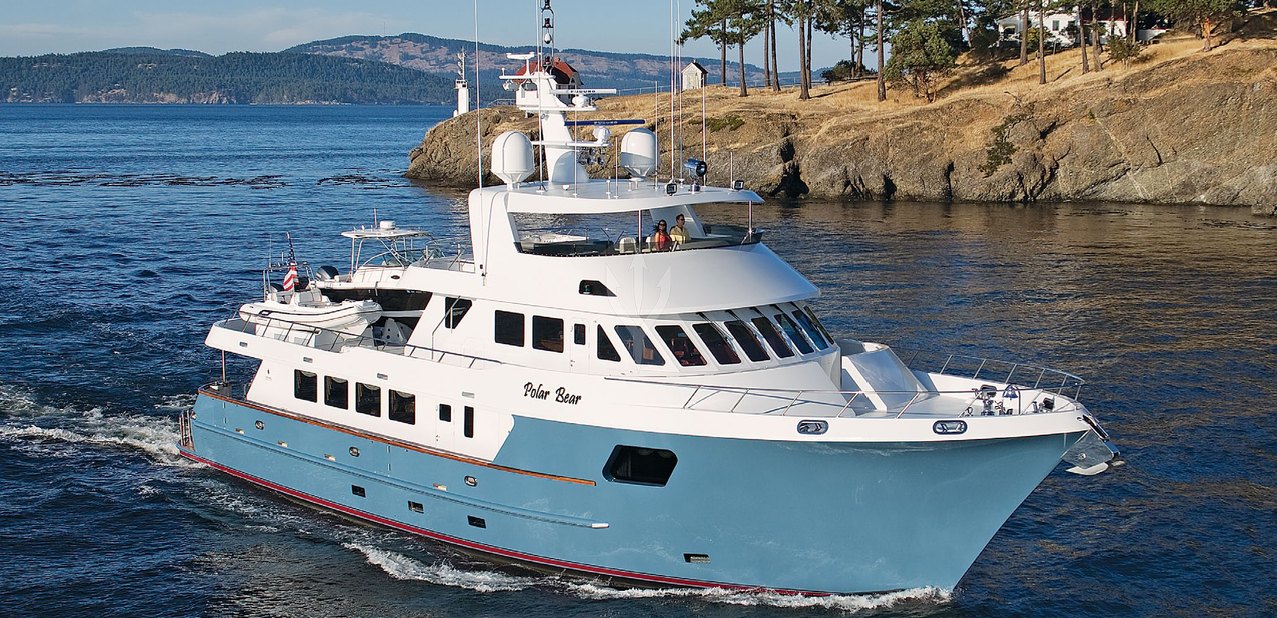
NOT FOR CHARTER *
This Yacht is not for Charter*
SIMILAR YACHTS FOR CHARTER
View Similar Yachts
Or View All luxury yachts for charter
- Luxury Charter Yachts
- Motor Yachts for Charter
- Amenities & Toys
POLAR BEAR yacht NOT for charter*
31.08m / 102' | citadel | 2011.
Owner & Guests
Cabin Configuration
- Previous Yacht
Special Features:
- Impressive 5,100nm range
- Two VIP cabins
- Sleeps 10 overnight
The 31.08m/102' expedition yacht 'Polar Bear' was built by Citadel in the United States.
Guest Accommodation
Polar Bear has been designed to comfortably accommodate up to 10 guests in 5 suites comprising two VIP cabins. She is also capable of carrying up to 3 crew onboard to ensure a relaxed luxury yacht experience.
Range & Performance
Powered by twin diesel Caterpillar (C-18B) 750hp engines, she comfortably cruises at 10 knots, reaches a maximum speed of 12 knots with a range of up to 5,100 nautical miles from her 8,600 gallon fuel tanks. Her water tanks store around 1,300 Gallons of fresh water.
*Charter Polar Bear Motor Yacht
Motor yacht Polar Bear is currently not believed to be available for private Charter. To view similar yachts for charter , or contact your Yacht Charter Broker for information about renting a luxury charter yacht.
Polar Bear Yacht Owner, Captain or marketing company
'Yacht Charter Fleet' is a free information service, if your yacht is available for charter please contact us with details and photos and we will update our records.
Polar Bear Photos

NOTE to U.S. Customs & Border Protection
Specification
M/Y Polar Bear
SIMILAR LUXURY YACHTS FOR CHARTER
Here are a selection of superyachts which are similar to Polar Bear yacht which are believed to be available for charter. To view all similar luxury charter yachts click on the button below.
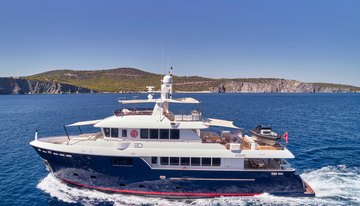
29m | Cantiere Delle Marche
from $65,000 p/week ♦︎
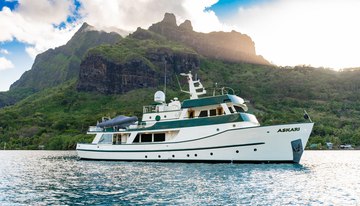
33m | Sermons
from $97,500 p/week
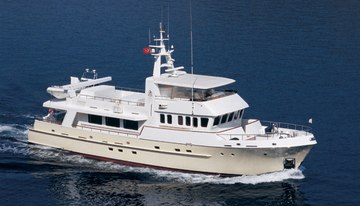
Belle Isle Sea
28m | Turquoise Yachts
from $25,000 p/week
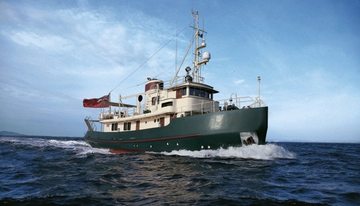
30m | Benetti M&B
from $35,000 p/week ♦︎
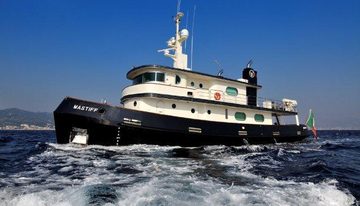
28m | Appledore
POA ♦︎
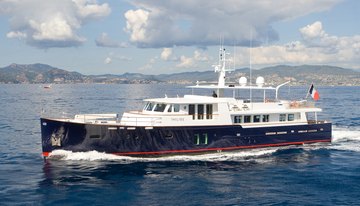
from $53,000 p/week ♦︎
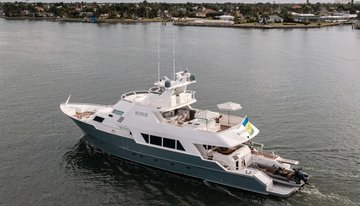
32m | Poole Boat Co.
from $36,000 p/week
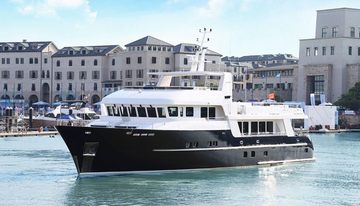
from $75,000 p/week
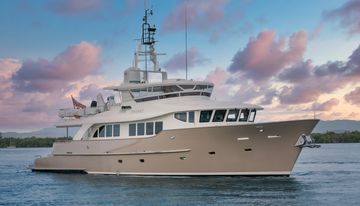
28m | Sulis Marine
from $78,000 p/week
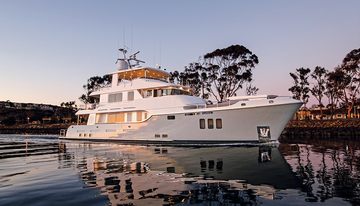
VivieRae II
30m | Nordhavn
from $90,000 p/week *
As Featured In
The YachtCharterFleet Difference
YachtCharterFleet makes it easy to find the yacht charter vacation that is right for you. We combine thousands of yacht listings with local destination information, sample itineraries and experiences to deliver the world's most comprehensive yacht charter website.
San Francisco
- Like us on Facebook
- Follow us on Twitter
- Follow us on Instagram
- Find us on LinkedIn
- Add My Yacht
- Affiliates & Partners
Popular Destinations & Events
- St Tropez Yacht Charter
- Monaco Yacht Charter
- St Barts Yacht Charter
- Greece Yacht Charter
- Mykonos Yacht Charter
- Caribbean Yacht Charter
Featured Charter Yachts
- Maltese Falcon Yacht Charter
- Wheels Yacht Charter
- Victorious Yacht Charter
- Andrea Yacht Charter
- Titania Yacht Charter
- Ahpo Yacht Charter
Receive our latest offers, trends and stories direct to your inbox.
Please enter a valid e-mail.
Thanks for subscribing.
Search for Yachts, Destinations, Events, News... everything related to Luxury Yachts for Charter.
Yachts in your shortlist
- Yachting World
- Digital Edition

Sailing Svalbard: a photographic expedition in the Artctic circle
- November 1, 2022
Legendary sailing photographer Rick Tomlinson leads a wildlife expedition sail in Svalbard searching for polar bears and stunning scenery to capture

It’s 0600 and I hear movement down below, our guide Marcel going for his shower. I’d woken a couple of hours earlier when I knocked a pillow covering the window and bright, bright, sunlight came streaming in. I couldn’t get back to sleep, we were in an area where polar bears had been recently sighted and I could feel they were out there right now.
Marcel came up, took one look around and calmly said, ‘There’s a bear.” Where? I’d been staring at the same area for two hours and seen nothing, in fact I still couldn’t see it!
We were aboard the expedition yacht Qilak in the Arctic archipelago of Svalbard on a photographic expedition that was originally planned to mark a 60th birthday two years ago, but got rescheduled due to Covid. Qilak is a 66ft purpose-built high latitude expedition yacht owned and skippered by Belgian Philippe Carlier, whose unique concept came about after he bumped into designer Merf Owen in a pub in Hamble.
Built at KM Yacht Builders in Holland in aluminium, and launched in 2016, Qilak incorporates many of the skipper’s own ideas as well as the design teams and KMs input. She is distinctive by her outline, tough and functional, yet with a few more comforts than some of the other expedition yachts I’ve worked on.
Qilak spent most of the pandemic in Norway and Iceland and had sailed to Svalbard a few weeks before we joined her in Longyearbyen. At 78° north this is the most northern town in the world with a population of just over 2,000. When you look at a map, first find the top of Norway, then go up another 500 miles – that’s the Svalbard archipelago and Longyearbyen is on the island of Spitsbergen.

It’s just over 600 miles to the North Pole. By comparison the cruising area on the Antarctic Peninsula is around 63° south, some 1,600 miles from the South Pole such is the effect of the Gulf Stream on northern climates.
Qilak would be our base, our accommodation and our transport, and it was with great excitement we all met on board after two years of contact only by email and Zoom.
The guests were a German family, friends and adult children, the parents both very keen photographers who each year would take an extended photography trip for their vacation. For this birthday they’d signed up for a ‘Rick Tomlinson Photography Expedition’ via Qilak ’s website.

Stepping ashore for a hike. Photo: Rick Tomlinson
Looking after us and keeping us safe on board the four crew consisted of owner/captain Carlier, Spanish first mate Carlos Torre, Czech Tomas Lindovsay on the interior, and local specialist guide and gun handler Marcel Schütz from Switzerland, which certainly made for an international group.
Wild subjects
May is still early in the Arctic and this year the pack ice was well established a long way south so venturing onto the north coast was impossible.
Given these limitations we made our way north to explore the Lillehookfjorden and Kongfjorden, stopping on the way to photograph the walrus colony on Sarstangen. At around 100 miles it involved an overnight passage, but you wouldn’t have known it as we sailed in 24 hours of daylight. This was the only day of poor weather and we were set to enjoy nine days of sunshine, blue skies and mirror-like waters as a large area of high pressure dominated the area.

Walrus colony photographed at Sartstangen on the way to Lillehookfjorden. Photo: Rick Tomlinson
Once in the fjords we’d approach the glaciers and drift with the brash ice, or anchor Qilak in a safe location then use the Zodiac RIB to take people ashore to hike, or use the Zodiac to explore around the ice and islands.
Temperatures were around 4° but in the sun it would feel much warmer. However, there was still a lot of snow on the ground lying up to a metre deep which could make walking onshore quite difficult. Also ashore was the very real danger from polar bears, so guide Marcel carried a flare pistol and shotgun whenever we were on land.

Photographers can never be sure quite what they’ll see during an expedition to the Arctic, but bearded seals make for ideal subjects. Photo: Rick Tomlinson
As the photography guide I would talk through what I was seeing, which lens I was using and why. I’d offer more help to the less experienced in the group and let the more experienced do their own thing, but always on hand to answer questions and discuss techniques.
In the evenings we’d edit our pictures, then share them on a big screen in the saloon. Usually the whole group would gain something from this, including me. The temptation with wildlife is to fill the frame with the subject, but it’s also important to show the environment and habitat they’re in – otherwise you could be shooting in a zoo!
However, as with all rules in photography, those rules are made to be broken. By coincidence we were all using Nikon gear – my favourite lens is the Nikon 200-500mm zoom. To keep the pictures sharp with the long lenses a fast shutter speed is needed, usually at least 1/2,000 sec with ISO 400.

Qilak anchored in the mist at Svalbard. Photo: Rick Tomlinson
With wildlife you can’t guarantee what you’ll see but thanks to Marcel and the experience of skipper Phil we were able to make the most of the opportunity. For a trip like this polar bears are generally at the top of everyone’s wish list, but you have to be realistic and it’s not a certainty that you’ll see them. That said, on my five trips up to Svalbard we always have.
However, walrus, whales, reindeer, puffins and the many different types of seabird, plus the beautiful glaciers and icebergs are more or less guaranteed. Every day we were lucky to see a lot, helped by the beautiful weather making the ice and glaciers sparkle.
Capturing midnight
I’d brought a drone for one specific shot of Qilak in the ice by a glacier. I’m not a fan of using drones in this environment, particularly around the birds and wildlife, but away from them they give a unique perspective and show what it’s like to be in this remote place. I wanted the light as low as possible for the picture, and at this time of year this meant shooting at midnight. This is one of the great things of a dedicated photography trip on a small vessel – you have the necessary time and when you want to try something everybody buys into it.
At midnight first mate Carlos and I took the Zodiac away from Qilak to launch the drone clear from the mast and rigging. The light had softened just a little, but in photography terms there is only two F stops variation between shooting at midday or midnight up here.

Qilak among the ice. Photo: Rick Tomlinson
Where possible I tend to use a drone purely to get the high vantage point, so I take the RIB out to where I’d normally shoot from and then the drone goes up vertically, I take the shot and then it comes down and we hand catch it – minimising as much risk in flying or retrieving it as possible. I use the DJI Phantom 4 as it has proper legs to catch it with. The downside is it is much larger than, for example, a Mavic and awkward to travel with on aircraft.
The picture was exactly what I’d envisioned, showing Qilak as a small boat in the wilderness. I was really pleased with the result and it’ll feature in my 2023 calendar.

Zooming in to get a shot of a polar bear. Photo: Rick Tomlinson
The bear hunt
When you start a trip like this it initially feels like you have all the time in the world, but suddenly time speeds up and in a few days it’ll be over. I felt we were repeating what we were photographing and we hadn’t seen all the things we wanted to: in particular a polar bear. From our contacts and research most recent sightings were in the fjords closer to Longyearbyen so we made the decision to head back that way.
Again we made an overnight passage and I joined in the watch system, really enjoying the time alone and in charge of the boat. There was no wind so we motored at an economical 6 knots. It was beautiful keeping watch in the pilothouse with autopilot on, coffee in hand.

Sailing to Svalbard in 24-hour sunlight in May. Photo: Rick Tomlinson
Inside Isfjorden we went first into Dicksonfjorden and then into Ekmanfjorden. It was here that Marcel spotted the bear. Even with binoculars I still couldn’t see it. We lifted the anchor and made our way across the fjord. A small expedition cruise ship had also spotted it and was heading that way too. Both vessels drifted by the ice shelf with the bear a long way off in the distance, seeming unaware of our presence.
My mind was racing; would he come our way or walk off? We were watching him for quite a while as he slowly paced back and forth, then suddenly he was within camera range, rapidly closing the distance between us. He began taking interest in the boats, coming right under the bow of the ship, looking and sniffing, then raising up on his back legs to get a better view. Sensing nothing to eat under there, he turned his attention to us.
On a yacht with some open water between you and a bear is a safe place to watch from; the bear can’t climb onto the boat from the water so we were able to maintain a safe position even as he came close, checking us out.

Expedition highlight, a polar Bear in Dicksonfjorden. Photo: Rick Tomlinson
While we see a cute cuddly polar bear, he’s seeing us as lunch. Marcel was happy with our situation so we drifted along, watching and photographing. All you could hear aboard Qilak was camera shutters going off in rapid fire, then a pause to change lenses as the bear became too close for the 500, then 300, then the 70-200 zoom.
As we drifted closer to the ice edge skipper Phil used the engine to keep us at a safe distance. When the bear came close and reared up on his hind legs again, reaching his full height to get a look at us on deck, we used the engine and bow thruster to move a bit further away.
Having had plenty of time to get our pictures we were able to put the cameras down for a while and just watch and enjoy this magnificent creature’s presence until he decided to move off. We were all on a high from the experience and felt so lucky to have had such an encounter. Immediately afterward everyone went below and the saloon table was soon covered with cameras, laptops and ipads as SD cards were downloaded and pictures proudly shown on the big screen.
We still had a few more days to explore and the weather continued to be so beautiful it was hard to go below and go to sleep. We just didn’t feel tired as it was so bright in the sky at 0300. Despite the sunshine, we spent one night at anchor only for the wind and tide to change and bring a lot of ice around the boat.
Carlos and Phil were on watch and decided we should move – but there was a problem, we couldn’t lift the anchor as the chain was frozen to the ice. Lots of motoring and winching and poking with a boat hook later we eventually set it free and moved to a safer place. It was a reminder that despite the balmy conditions we were in a tough environment.
We left the boat and the crew back in Longyearbyen, having enjoyed a fantastic experience. Qilak continued to operate in the area for the rest of the season. On the following trip they didn’t get to see a bear, although they did enjoy some great hikes on the glacier. You never quite know what you’re going to see on these trips, but they’re always memorable!
If you enjoyed this….
Yachting World is the world’s leading magazine for bluewater cruisers and offshore sailors. Every month we have inspirational adventures and practical features to help you realise your sailing dreams. Build your knowledge with a subscription delivered to your door. See our latest offers and save at least 30% off the cover price.

Sailing and other adventures
Explore the archipelago of the Lofoten and Vesteralen, Ski remote mountains in the Lyngen Alps, search for polar bears in Svalbard or sail around the icebergs in Greenland, Bylgia will bring you there and be your floating basecamp.

Regardless Bylgja is designed to be handled short handed, we want to involve everyone in sailing her. Whether it be trimming the sails, steering the boat, launching the dinghy, navigating uncharted waters or even feeding the crew, she is a hands on ship and help from you is always appreciated.

In northern Norway you will find one of the best skiing in the World, away from the crowded slopes of the Alps. Only a few places on the planet offers sea to summit skiing and as Bylgja acts as your floating basecamp its just a step from the yacht to the snow (well, plus a short ride in our zodiac!).

Climb a peak in the Lofoten or hike the remote back-country of svalbard where you might encounter polar bears, reindeer, polar foxes.

Explore the anchorage in the evening or kayak a day in one of the thousands norwegian fjords, our Kayaks are ready to go.

Expedition support
whether you are planning a mountainering, filming or science expedition, Bylgja and her crew is ready to support your project.
Bylgja, a NOORDKAPER 66, was build in steel by Flevo Jachtbouw in the Netherlands and launched 2016.

New dinghy for BYLGJA – Bombard Commando C4
Clip trip to poel, short trip to poel island, latest adventures.
+49 178 69 60 208
Trips for Individuals
Group Charters
Ski & Sail
Kayak & Sail
SUP & Sail
Area of operation
Good to know
Our style - comming soon
FAQ - comming soon
Testimonials - comming soon
Vessel Tracking - comming soon

- Photo Workshops
- Iceland in Winter
- Iceland in Summer
- Iceland in Fall
- Iceland in Spring
- Drone Workshops in Iceland
- Wildlife Photo Workshops
- Faroe Islands
- Custom Tours
- Geldingadalir Volcano
- Golden Circle
- Landmannalaugar
- Northern Lights In Iceland
- Puffins For Three Days
- Snæfellsnes
- Snæfellsnes For Three Days
- South Coast
- South Coast For Three Days
- Waterfalls Of The North
- Testimonials
- Terms and Conditions
- Privacy Policy
Svalbard Polar Bear Sailing Expedition

In August, we offer a photography expedition to the Norwegian archipelago of Svalbard, located deep within the Arctic Circle. One of our main goals will be to find and photograph Polar Bears in its natural habitat out on the pack ice and Svalbard has historically been one of the most reliable places to photograph bears.
Together with the captain and our expedition leader, we will decide upon the best strategy to find and photograph Polar Bears on sea ice along with other charismatic Arctic wildlife, such as Walrus. Our success will depend on the ice condition and its location. In some years the ice is just off the northern tip of Svalbard while in other years it has retreated too far north to make it possible to sail there. In the case of the latter, we will search for Polar Bears that are on land in the northeastern part of the archipelago, where they are sometimes seen hunting on ice in front of glaciers. This is an expedition into a changeable environment and the element of surprise. The discovery of what wildlife is found where and when is a major part of the Svalbard experience.
The High Arctic is a place to inspire the imagination. Nowhere is it more accessible than the Norwegian archipelago of Svalbard, located deep within the Arctic Circle.

Polar bears – Normally between 10 and 20 Polar Bears are seen and photographed on each expedition

24 hour look-out – We have a 24-hour look-out for Polar Bears, so any time of the day, or night we can expect to have a Polar Bear shoot when the opportunity arises

Wildlife – Wildlife we hope to photograph: Polar Bears, Reindeers, Arctic Foxes, Seals, Walruses & birdlife, some of them are unique to the high north such as Ivory Gulls, Rock Ptarmigan, & Geese.

Whales – Sometimes whales are in the area, such as Blue whale, Fin whale and Humpbacks, but not promised

Amazing landscapes – Remote and unique wilderness with Ice bergs and wildlife

Small groups – Maximum number of participants: 12

Activity Level – Easy

Duration – 11 days / 10 nights

Professional Photography Guides – We offer local guides in Svalbard and our own guides

All-Inclusive Workshop – We’ll meet you in Svalbard and we take care of the rest
Payment info
- Deposit payment of $3,000 USD upon booking
- A further $5,000 is due December 2024
- Balance is due before March 2025
Total price: $14,900 USD
What's included
- Photography guiding by professional photographers and crew services
- 10 nights of accommodation aboard the ship
- The meals onboard shall consist of breakfast, lunch, afternoon tea/coffee and two-course dinner (three-course dinner the last evening)
- The mealtimes shall be held at regular times, but the catering crew has been informed that photography has priority on this expedition and flexibility is necessary
- Water coffee/tea ad libitum - available 24 hours a day
- Photography instructions and critique on demand from two highly experienced photo leaders along with Svalbard’s most experienced expedition leader
- Daily excursions by Zodiac (guests will be split into smaller groups per Zodiac due to limited seating)
- Lectures, briefings and shoreside interpretations
- Magnificent scenery and wonderful wildlife encounters
- Great company and safe and friendly travel
What's not included
- International flights – please contact our office for any assistance
- Hotel in Longyearbyen before and after the expedition
- Mandatory evacuation insurance – participants will require individual travel insurance
- Alcoholic drinks & any other drinks not mentioned above
- Customary tips for crew and staff
- Anything else not specified as included
Expedition Details
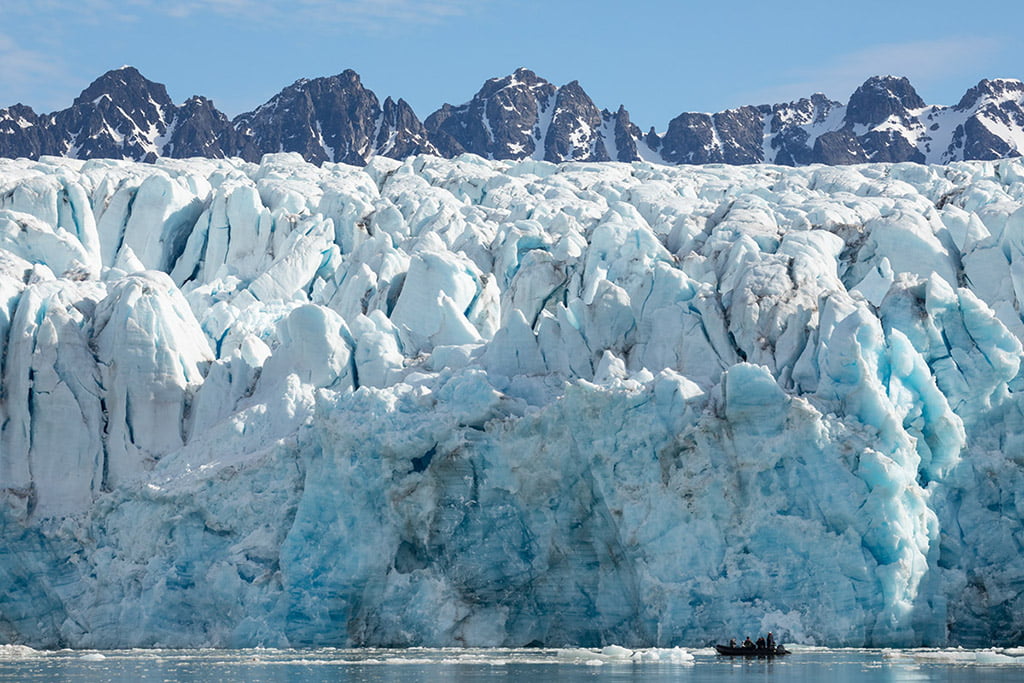
Getting to Svalbard & our flexible itinerary
Arrival to Svalbard
We recommend arriving in Svalbard on August 23rd, 2023. The expedition starts on August 24th, 2023 at 4 pm (16:00) when we board the boat at the dock. You can take a taxi from your hotel to the dock.
Departure from Svalbard
We return to the dock in the evening on September 2nd, 2023. We can stay on the boat until 9 am (9:00) on September 3rd . Flights can be arranged any time after we dock in the evening. There is often an early morning flight to Oslo, which is a popular option to book.
SAS and Norwegian fly to Longyearbyen in Svalbard from Oslo. We strongly recommend you arrive in Longyearbyen at least one day before the ship departs in case of lost luggage or delayed flights. There are a number of nice hotels in Longyearbyen and day tours can be taken out of town with local operators.
Please contact us for questions or assistance booking international flights (flights are not included) at [email protected]
Normally the seas we sail around Svalbard are smooth as there are sheltered fjords, but some crossings rougher seas can be expected. This is nothing to worry about though, not dangerous, but a patch or sea sickness pills are suggested if people are not used to boats
Upon leaving the small town of Longyearbyen we will know what we will aim for but our plans will change with what we find and with the ice and weather we encounter. Although Polar Bears will be high on our list of photography subjects, the full Svalbard experience is about so much more than the iconic Arctic predator. We will have 10 days to explore the islands and with the crew that is able to operate the ship around the clock, we can cover a great deal of terrain if we so choose.
As always, we will need to be flexible and adjust to the weather conditions to make the most out of the expedition and travel safely.

What to expect
Svalbard is situated at about 80 degrees north, so we schedule the expedition in accordance with prevailing weather and ice conditions. Even if it normally will be some changes in the planned itinerary this route cover the main areas we will visit. In August the drift ice edge can be situated further north and usually we spend time there searching for mainly Polar Bears. Svalbard is situated at 78-79 degrees north and you are in the High Arctic when you arrive there. The weather is constantly changing at these latitudes. Please study the information about clothing and travels to Svalbard. During our expedition, you can expect to see wildlife as Polar Bears, Walruses, Seals, Whales, Arctic Foxes, Svalbard Reindeer and a variety of bird species that are common in these Arctic regions. Sometimes we do long transport legs of sailing and sometimes we stay in one spot experiencing and photographing nature and wildlife.

Locations in Svalbard
Places we may visit Ice & time permitting, include:
Kongsfjorden, a scenic fjord complex of dramatic mountains and sweeping glaciers, housing Bearded and Ringed Seals, much flor, bird colonies and several options for shore landings.
NW Spitsbergen, an area of great beauty with glaciers, pointed mountain peaks and many islands and inlets. Here we often see Polar Bears, Walrus, Harbour Seals, Beluga Whales and many birds.
Liefdefjorden, a majestic fjord area with large glacier fronts, Polar Bears, numerous bird species, and frequently Beluga and Minke Whales.
Hinlopenstretet, which is often frequented by large baleen whales, houses Walrus, and boasts the largest accessible auk colony on a spectacular vertical cliff face. Seven Islands, the northernmost part of Svalbard, a truly spectacular icy home for Walrus and Polar Bears.

Places we might also visit are White Island, the easternmost part of Svalbard, as remote as anywhere you will ever get.
Bråsvellbreen, the northern hemisphere’s longest ice wall, at this time of year with numerous beautiful waterfalls pouring off it.
Edgeøya, a large island offering numerous options for hikes across lush tundra plains, studying flowers, breeding birds, Arctic Fox and Svalbard Reindeer – and often larger mammals too.
Hornsund, massive glacier fronts, and dramatic scenery, with colonies of various bird species and Ringed and Bearded Seals dotting the fast-ice, attracting Polar Bears.
For cancellation and refund policy for our workshops, please visit the Terms & Conditions page.

MS Virgo interior

MS Virgo in Hornsund, Svalbard
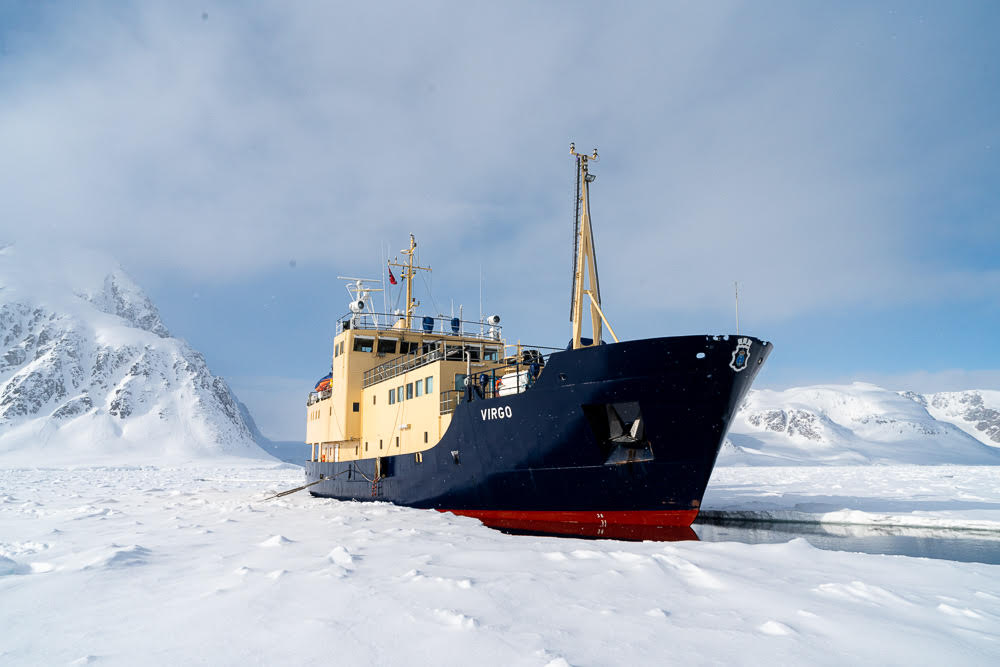
MS Virgo in Spitsbergen, Svalbard
The Expedition Ship – M/S Virgo
Our home away from home during the expedition will be the M/S Virgo. It will be newly remodeled especially for photography expeditions in the Arctic. M/S Virgo is a spacious boat with plenty of space for 12 guests and two guides. It was originally built in 1976 and has been a working vessel for the Swedish maritime authorities.
The boat has 9 cabins, 3 twin cabins, and 6 single-room cabins. All beds are made ready and bed linen and towels are provided for each guest. All cabins have private facilities with a shower and WC.
Cabins are assigned on first come first served when signing up for the expedition.
Foodservice will be at a designated time in our restaurant area, but as always we intend to be flexible for photo opportunities. The chef on board has a varied and tasty menu. Please let us know of any special dietary needs.
There is a spacious lounge with very good viewing opportunities and space for photo editing, charging batteries, listening to lectures, or just hanging out with other participants.
Username or email address *
Password *
Remember me Log in
Lost your password?
Owner story: In Svalbard, visiting the polar bears
Ocean and adventure sailor kari „ruffe“ nurmi was the first finn to sail around svalbard, a norwegian archipelago in the arctic ocean, in a fiberglass boat – a bavaria 300. here is his story….
published on 09 January 2018

The idea to sail around Svalbard had been brewing for years.
Every now and then it surfaced from the unconscious, only to quickly disappear back to the mysterious realms of the mind. Gradually it developed into a dream, and, finally, matured into a decision.
It was the call of adventure, a desire to experience something rare, endangered, vanishing and demanding, something I could tell my grandchildren about, that forced me to embark on this trip. Another driver was the growing concern for the irreversible changes that climate change is causing to the arctic nature. Besides adventure, that was my motivation for the trip. I wanted to meet the polar bears before I would have to say goodbye to them.
Ready to go
It was Midsummer night in 2013, when we were finally ready to cast off from Helsinki. According to Polar View’s sea ice charts, there was still fast ice all the way from the North Pole to Svalbard. The success of our circumnavigation depended on how the ice situation would develop. Historically it has seldom been possible. The boat was the same 24‐year old Bavaria 300 that had already logged more than 30.000 miles on the Atlantic, the North Sea and all over the Baltic Sea. One could say that running in had been sufficient. I had complete trust in the boat. Of course, the prudent thing to do would have been to make a trip like this on a steel boat. But since I didn’t have one, fiberglass and extra care would have to do. There would be no business getting caught in the pack ice. The departure had been preceded by four months of thorough preparations, and „Ruffe“ was up to the challenge. New sails from WB‐Sails, new mattresses from Unikulma (what a difference both made compared to their old and road‐worn predecessors!), a new heater (a reliable Ebersprächer) and a huge pile of new electronics (even though the quarter‐century‐old stuff still more or less worked) had been carried on board and installed during the winter and spring months. The engine had been updated earlier. Everything on the boat had been checked, and small but vital fixes had been done to e. g. the rudder and rigging. As anyone who has ever done any boatwork can guess, things weren’t ready until the last minute.
Esa and Mika, a familiar crew
For the first leg from Helsinki to Tromsø I was joined by Mika, who had sailed with me on my first Atlantic crossing. Esa, who also was a familiar site on board from previous trips, sailed with us to Visby. From there he returned to work and would join the crew again in Tromsø. The more demanding the trip, the more important the crew becomes. The truth is that you can’t afford to screw up with crew choice. I had sailed a lot with both of these guys, covering long distances. In a small boat you get to know each other, so I knew I could trust them. And, I was glad that they agreed to come. Apparently, the trust was mutual. The boat and the crew were one hundred per cent sorted, now all we needed was a little luck.
Test driving the autopilot
We sailed from Helsinki to Visby in nice weather with the autopilot keeping us busy. The new guy, „Raymond“, wouldn’t stay on course no matter what we tried. Finally, we thought of moving the compass unit to another location. As soon as we did that, „Raymond“ got his act together. With hindsight it must be said that the manual did say that the compass should be placed away from other equipment. We arrived in Visby at dawn and spent the only really warm day of the entire trip there. After that, our shorts didn’t come out until back home. We drove Esa to the airport with the guest harbour’s car, worked a little on the boat, bought some groceries, went for dinner, and headed for the fuel dock only to find out that it was closed. To get fuel we had to call the number on the door and pay a hefty extra charge to get the attendant to come over.
Settling into our routines
Finally, we were able to set sail and start our watches. From here on, we would continue with just the two of us. We decided on a system of three‐hour watches, which seemed to work well for us, and we held on to it for the rest of the trip. Three hours is long enough for the off‐watch to get some sleep, but short enough for the lonely watch keeper to be able to pass the time and stay awake during the long hours of the night. We glided along nicely in pleasant conditions. Life on board settled into the three‐hour rhythm. Most of the time one of us slept while the other sailed. The autopilot made life easier, especially when we had to motor in calm weather. For some reason I have always enjoyed being at sea, and never feel lonely or bored. On land, I’m social, talk a lot and find it easy to get to know people, but on a boat, I have no problem being alone. A boat at sea takes you to a completely different world, and I enjoy being there. Sometimes it’s funny to think that I remain the same but the world around me changes into a different one. One thing that we have always held on to is a proper meal, regardless of weather or sea state. This trip was no exception. As often happens, meals become the high‐point of the day in an otherwise monotonic daily routine. We took turns in preparing the meals, and now, at a more mature age, a glass or two of red wine always accompanied our culinary exploits. And, since it was the chef’s privilege to enjoy an extra glass of wine while preparing the meal, galley duty never felt like a burden.
A detour to Bornholm
The plan was to cover long distances instead of collecting harbours or hanging around in them. This way we would have more time in places that were new to us, like the long coast of Norway and Svalbard. From Visby we aimed to sail straight to Copenhagen, but close to Bornholm we found ourselves pushing against a gale straight from the nose. Sailing was hard work and really slow against the big waves. When the rudder started making a funny noise as we were dodging ships in the middle of a busy channel, we decided to turn around and run with the wind to Bornholm for a good night’s sleep and to check the rudder that was worrying us. The forecast for the next day was much better, so in practice we wouldn’t even lose very many hours. No reason to push on and risk losing the rudder. The forecast was right, and we set sail from Rønne in Bornholm the next afternoon in nice and sunny conditions towards the sunset and the city of Copenhagen behind it. We didn’t find anything wrong with the rudder, so we figured that the noise was just the new bearings that hadn’t yet settled in.
Rainy Copenhagen
In the morning light we got sight of the Øresund bridge and other Copenhagen landmarks. We sailed to the Svanemølle harbour, situated next to the Tuborg brewery, under an uninterrupted flow of landing airplanes and surrounded by busy shipping traffic. We made our way to the harbour and headed for a floating unmanned fuel dock to top up our diesel tank, which we almost managed to do before the machine gobbled up the rest of our money and refused to continue any cooperation with us. Again, we had to lick our wounds. We tried to call the phone number we found on the dock, but to no avail. So, our visit to Copenhagen didn’t start well. We managed to find a decent spot in the marina close to the harbour office, and decided it was time for a well‐deserved shower – except that first we had to figure out that we needed to purchase a prepaid shower card from a vending machine outside the service building. When even the rainy weather seemed to be against us, we decided that our visit to Copenhagen would be over the next evening. We headed towards the Danish straits and Kattegat.
In the Danish straits
The plan was to sail through the straits and continue across the Kattegat and Skagerrak to the Norwegian coast, and make landfall somewhere around Stavanger or Bergen. The weather gods, however, decided to interfere with our plans once again. We made it through the narrow strait between Helsingborg and Helsingør, dodging ships in the dark, but once we came to the Kattegat, the wind started to pick up. It didn’t take long until we were again fighting our way against a 35‐knot gale blowing straight from our nose. The waves were steep, and the going was wet and uncomfortable. Our speed over ground was about two knots. Adding insult to injury was the smell of diesel inside the boat that certainly didn’t make us want to sleep or cook in those conditions. Apparently, there was a leak somewhere in the fuel system. Inside the boat, I even started to ask myself what am I doing here voluntarily. Over the years this has only happened a couple of times before. We tried to take turns napping in the cockpit, but with little success. We were tired and hungry, and our cookie supplies wouldn’t last forever. It was decision time again. We could either continue pushing against the wind, without knowing how long the gale would last. Or we could turn back, and get a fast run to Helsingør, where we would arrive in about five hours. We had just spent the entire night and half of the day covering that distance, staring at the Kullen lighthouse next to us for hours on end. It didn’t take us long to make the decision: to Helsingør, and – if available – plenty of Italian food in the evening. But first we had to thoroughly clean the smelly bilges and dry the boat that had been soaked by the waves working their way in through the air vents on deck. After we had cleaned up, we took a quick nap and headed to town to look for an Italian Restaurant. Helsingør turned out to be a nice little town, and we even found a very nice little Italian restaurant.
The cab driver’s recommendation
Our second attempt at Kattegat was successful. Apart from a few squalls, the weather was nice. A cab driver in Copenhagen had highly recommended that we visit Skagen at the northern tip of Denmark. We decided to check the place out before moving on to the country of the fjords. Skagen, with its many restaurants and a crowded harbour, could be described as touristy. The harbour was packed, and we were assigned a place on a raft as the fourth boat from the dock. On our outside there was one more boat from Germany. We mentioned to them that we would be leaving in the morning around eight o’clock. No problem, said the cheerful Germans. We didn’t take the departure time that literally and were just starting to prepare breakfast when I happened to look out the window. The Germans were standing on deck, holding their lines and ready to let us go at exactly the agreed time. We had no other choice than to postpone our breakfast until we were at sea. We slipped our lines and let our neighbours get back to their bunks.
The northern tip of Denmark is a long sand dune that reaches out to the sea. After we had safely rounded it, we set our course over Skagerrak towards the Lindesnes lighthouse on the Norwegian coast in a nice beam reach. We even spotted the first dolphins of this trip. In the evening the wind died, and we were greeted by the Norwegian summer in the form of fog and drizzle. Once we got sight of the Norwegian coast, we followed it from a safe distance towards the north. Our first landfall in Norway was Bergen. After two and a half days of sailing, we made a turn right at the Marstein lighthouse. Our cameras went into overdrive as we sailed in between the majestic islands. The scenery was immense, and the water was deep. Even right next to the shoreline the depth could be more than two hundred meters. Most of the time it was too deep for the echo sounder to get a reading at all. We learned that Bergen is the rainiest place in Norway. It was supposed to rain two days out of three. Well, maybe so, but we spent two gorgeous and sunny summer days there, enjoying the nice atmosphere and the fish market’s offerings, like giant crabs and whale meat. The latter isn’t a very ethical choice, but we were curious and had to try it. We also got some good tips – and pitying looks – from local sailors when we said we would be continuing to the north. We would have to pass the infamous Statt peninsula, also known as the Cape Horn of Norway. This was the first time we learned about the nasty reputation of the place. It is the westernmost part of Norway and is known for the dangerous sea state that the colliding ocean currents can cause. Even big ships have gone down there, and the place is thought to be so bad that there are plans to build a tunnel for boats through the mountain so that they can safely pass the place in sheltered waters.
The treacherous peninsula
The weather forecast seemed OK, so we set our course towards the North Sea in the evening. After seven hours of motoring we were out of the archipelago, and the North Sea greeted us with confused two‐metre seas, even though there was hardly any wind. We settled into our familiar watch routine and headed north. We decided to round Statt from a safe distance offshore. Except for the uncomfortable seas, the conditions were fine, and we were making decent progress among the oil rigs. Everything was going well until a gale warning was broadcast on the VHF. By then we were used to them, but this time we got a little worried, because we would be precisely at Statt when the gale would hit us. It turned out that we were lucky, and the wind, that reached 34 knots, blew from the south and was from the same direction as the current. The seas rose to about three metres, and we were able to round Statt and pass back into the archipelago without problems.
Shopping in Ålesund
We decided to spend the night on the nearby island of Sandøya at the guest dock of a little fishing village. From there we continued in daylight towards Ålesund. It turned out that darkness was the only thing the weather didn’t have in store for us. During the course of the day, we were treated to wind, calm, rain, fog and even a little sleet. Eventually Ålesund appeared from the fog, and with the second try we even managed to find the right opening in the breakwater and the guest harbour surrounded by houses built right on the waterfront. Ålesund is known for its Jugend architecture, which isn’t found anywhere else in Norway. The reason for this is that practically the whole village burned down at the heyday of Jugend, and was therefore rebuilt in a uniform style. Nice place, with a nice festival going on. We even found a very well stocked chandlery. Our shopping got a little out of hand as we stocked up on warm sailing gear. With hindsight it must be said that everything we bought did turn out to be useful up north.
Raymond dies
From Ålesund we set our course to Rørvik, a small town 200 miles to the north‐east. That meant a couple of days offshore again, and the weather was very nice for a change. Now we also officially entered Northern Norway. This was also reflected by the weather which was getting noticeably chillier. Our brand‐new autopilot, Raymond, resigned with a loud crunch. If there would have been enough wind to sail, this wouldn’t have been a big issue. But hand steering when motoring offshore in a calm without any visible reference point is tedious and mind‐numbing. Staying on course requires constant staring at the compass, which is especially hard at night when you’re tired. The image of the compass rose keeps appearing in your field of view long after your watch. Once in Rørvik, it was time to start the hunt for autopilot spare parts. The pilot was of course covered by warranty, but spare parts just didn’t exist anywhere near. And having them delivered somewhere along our route turned out to be a challenge. The parts travelled along their own routes, while we sailed on until finally our paths crossed in Tromsø. Phone calls were made to both Finnish and Norwegian distributors, emails were sent, and alternatives pondered. Even a service guy from a local chandlery came over to the boat to declare that yes, it’s broken.
Enjoying the scenery
From Rørvik we headed towards bodø. Now we decided to start following the inner leads in the archipelago and do day sails enjoying the spectacular views of northern Norway. We crossed the arctic circle and arrived at the foot of the Seven Sisters mountains in the evening – or rather at midnight. At these latitudes it doesn’t get dark during summer nights, so, provided there’s no fog, you can enjoy the scenery at all hours. In the morning, we continued in typically varying conditions. The fronts coming from the North Sea kept passing over us at a fast pace, and the weather changed from sunshine to rain squalls and thick fog and back in a matter of minutes. You won’t get bored sailing up here. And as a bonus, you’ll get to enjoy spectacular light and rainbow shows. In the evening we found an idyllic little guest harbour in Støtt, 30 miles south of Bodø, where we tied up next to the summer cottage of a nice young couple who even let us taste their delicious fish meal. The place was beautiful, although low‐hanging clouds covered a big part of it. Anyway, it was time to go to sleep, listening to the wind howl in the rigging.
A bit of personal hygiene
Early in the morning we set sail for Bodø, where it was time to say good bye to the dirt layers we had carefully built over our skins at a hotel sauna close to the harbour. My sister Satu joined the crew for a few days, and we headed for the Lofoten islands. The next night we spent in the idyllic and picturesque little guest harbour of Grotøy, enjoying a fantastic, calm and sunny summer night – dressed in woolly hats and long johns, of course. Through the crystal‐clear water, we could see starfish lying on the bottom. The surrounding mountains were majestic. We felt that the further north we came, the calmer the weather became. There were very few boats in these waters, so the harbours weren’t crowded. Next day we continued in calm and occasionally sunny weather. Our fishing pursuits still didn’t seem to bring in any results. We towed a lure as we sailed, and obviously our speed was too much for the performance capabilities of the local fish. Once in Lofoten, we decided to check out the famous Trollfjorden, where the big Hurtigruten ships visit and somehow manage to make a breathtaking turn. Nice place, steep walls and snow‐capped mountains. Our cameras got some serious action again. For the night, we headed to a fishing village called Engenes. After tying up at the dock we were greeted in Finnish by a couple of passers‐by. It turned out that the place was full of Finns on a fishing trip. Unlike us, they had even caught some fish.
First leg done
In the morning we set sail for Tromsø in the usual drizzle. We got there in the evening, almost exactly four weeks after our departure form Helsinki. Just as planned. One the way, we even saw another sailboat. Even more surprising was that it was Finnish. Later we found out that it was „Aurora“, on its way to completing a tour of Fennoscandia. We tied up at the down‐town guest dock and celebrated the first leg with some nice steaks. We had sailed the entire west coast of Norway. These waters, harbours, people and landscapes had left us impressed. You can’t help falling in love with this coastline, despite the rain and fog that so often covers it. Tomorrow we would be joined by Esa and Möö, who would join the crew for the sail to Svalbard. The original plan was that Mika would only sail to Tromsø, but of course he couldn’t leave it at that after sailing all the way up here. So, it was decided that Mika would sail with us to Longyearbyen and fly back to Tromsø, where Esa’s car would be waiting for him and he would drive it home. So, the old gang was back together. The boat was a bit tight for the four of us and all our stuff, but I knew that it wouldn’t be a problem for these guys.
Staying warm in the arctic
While we were waiting for Esa and Möö, we picked up the spare parts for the autopilot. The importer had finally managed to send them to a fishing store somewhere in the outskirts. There we found some Helly Hansen ice‐fishing overalls that we decided would be ideal sailing clothes for the arctic conditions that we would be facing. The overalls turned out to be the perfect choice, and we were nice and warm during the crossing from Tromsø to Longyearbyen – unlike Esa who ended up buying Mika’s overall when he left for home. We also bought a selection of different gloves to try out. Keeping our hands warm had turned out to be a real challenge. Gloves, whether they were waterproof or not, got quickly wet in the rain. Once wet, they didn’t have much of a warming effect any more. Heavy lined rubber mittens of the type used by fishermen and in the fishing industry worked quite well, as long as you remembered to stuff the glove inside the sleeve of your raincoat. Otherwise water would quickly trickle down the sleeve and straight into the glove. Really warm, but a bit clumsy, were gloves that are used for handling frozen fish. I really recommend them, even if their rough surface was a bit hard on the leather on the steering wheel. And, while we’re at it, let’s continue with a few more fashion tips for arctic sailors. Shorts were already mentioned, you can forget them. Warm and odour‐repellent merino wool is the underwear of choice for the long‐distance sailor in the arctic. We wore the same long johns practically all the time that we were awake for five weeks straight without any serious odour issues. Proper offshore foul‐weather gear with a high collar is a must. So is a warm hat. Your head, ankles and wrists have blood vessels close to the skin, so these areas should be kept warm. Wool or fur hats are fine. Our mid layer consisted of a thick wool or fleece layer and our new lightly padded mid‐layer jackets that we had bought from Ålesund. Mika had leather sailing boots that were not only comfortable, but also surprisingly warm. Others had traditional rubber boots that needed woollen socks and insoles to stay warm. Rubber boots always become wet over time, so breathable Gore‐Tex footwear and warm socks would be the ideal solution. The off‐watch’s best friends are a powerful heater and a good sleeping bag. Our new Ebersprächer heater worked without problems. Apart from heating, its main job is to keep the interior dry.
Svalbard bureaucracy
We had a 580‐mile arctic sail from Tromsø to Svalbard ahead of us. But it’s not a place where you sail on a whim. You need official permits. And before the Sysselmannen, the local governor, will issue these you need to have sufficient insurance to cover potential rescue operations. You also have to provide proof that you have the necessary competence as a sailor and with a gun. We had our own weapons (a rifle and a shotgun), so didn’t need to rent them. Svalbard is home to about 3000 polar bears, which is more than there are people living there. It is mandatory to carry a powerful enough weapon to be able to stop a hungry or otherwise too curious polar bear anytime you wander outside a residential area. We were prepared for the bureaucracy. I had contacted the authorities six months in advance and managed to get the required insurance from the German company Yacht‐Pool.
First impressions
There was some excitement in the air as we filled our tanks and headed out to sea with our fresh crewmembers. According to the three‐day forecast, we would have 16–20 knots of wind. The reality was about 30 knots, with plenty of rain and fog. The waves were enough to make the cook sweat. It turned out that up here it either blows hard or not at all. Ships or other boats were few and far between. We saw one fishing vessel during the entire crossing. Things changed when we were roughly at the latitude of Bear Island. Suddenly the sea was flat calm. The sun came out, curious dolphins started to pay regular visits to us, and we even spotted a few whales. The beauty around us was stunning. We didn’t even mind that we had to motor the rest of the way. We had plenty of diesel in jerry cans, so that wasn’t a problem. In the bright weather visibility was excellent. We could see Svalbard rising above the horizon from a distance of 50 miles. It was a beautiful sight. The glaciers also had an effect on the temperature. It felt like someone opened the freezer. For the rest of the trip we couldn’t get our eyes off the snowy peaks and glaciers. With daylight around the clock, it didn’t really matter what time it was. A couple of times It took me a while to figure out if it was day or night when I got up for my watch. Svalbard was magical. As it stood there, bathing in the bright light, there was something threatening and challenging about it. It was rough and somehow featureless, but still it constantly revealed an infinite amount of new details. It was extremely beautiful and seductive, but at the same time it seemed to send out a warning. The islands would not take responsibility for the faith of their guests, to them it would be just a matter of fact. Longyearbyen, the capital of Svalbard, is an old mining village. Today, it’s populated mainly by scientists and tourists. In terms of services, there’s an airport, a couple of museums, a few bars and a row of tax‐free and outdoor shops. Still, it has a unique atmosphere. All in all, a fascinating place.
A promising ice situation
After Mika left for home, we started preparations for the circumnavigation of Svalbard. The ice reports looked good. The edge of the Arctic ice pack had withdrawn to the north, and even the critical Hinlopen strait seemed to be open. Sailing around Svalbard has traditionally been almost impossible because of the ice. As far as I know, just two Finnish steel boats have been successful, the last one being Hannu and Auli Irjala on Manta in 2012. My Bavaria is a fiberglass boat, and much more vulnerable than a steel boat, so there was some anxiety in the air. We had to prepare for three weeks of arctic wilderness, so food, drink and fuel were brought on board accordingly. The next chance to get supplies would probably be in Norway, a thousand miles away. From a well‐stocked snowmobile store I got three more jerry cans for fuel, an Icom handheld VHF and a flare gun. We checked the EPIRB and charged the Iridium satellite phone. Guns and survival suits were taken out of their storage. The Navionics electronic charts only reached Bear Island, so the chart plotter was useless. It was time to bring out the paper charts. We carried 220 litres of fuel, so we would be able to motor for about five hundred miles. The heater would only be used while sleeping. Our water capacity was 160 litres. Water consumption is lower than normal in the cold conditions, and in an emergency we could drink from streams on land. Care would have to be taken, however, because of the risk of getting a nasty parasitic worm that could cause serious illness later on.
To the north
We set sail in cloudy weather on Sunday, July 27, at six o’clock in the morning, headed for Ny‐Ålesund, one of the world’s northernmost inhabited places, situated in Kongsfjorden. We got there at four in the morning. Because the sun doesn’t set, the time of day doesn’t really matter. We declared it was time for dinner. Continuous daylight is also an important safety factor, because trying to avoid icebergs in the dark would be a stupid gamble. In the summer, Ny‐Ålesund is a busy arctic research hub, and there’s no shortage of researchers or things to research. There was even a guy chasing geese and trying to imitate their honking. We had difficulty holding our laughter. One of the people we met told us that this was the rainiest summer in Svalbard for as long as anyone could remember. We would later find this to be true. We also met a guy who tests lunar vehicles for NASA, and learned that the landscape in Svalbard resembles that of the moon. We got permission to fuel at the passenger ship fueling dock. The huge fuel hose had so much pressure that we spilled a little diesel overboard. We could feel the disapproval of the entire arctic research community, so quickly sent postcards from the worlds northernmost post office and headed north past the growlers towards the Magdalena fjord.

Carefully among the icebergs
The Magdalena fjord is sheltered and beautiful. We dropped the hook in shallow water at just three metres at Trinityhamna. Here you have to be careful with the ice. Big chunks of ice break off the glacier at the end of the fjord, accompanied by a loud rumble. These masses of ice move around the fjord with the wind and tide, and can quickly surround a boat or get wedged over the anchor, so it’s necessary to keep an anchor watch. We also had some trouble getting the anchor to hold. This time the weather was calm, so we felt confident to leave the boat alone for a while. All three of us hiked with guns on our backs to the glacier a couple of kilometres away. There we had some well‐deserved beers while constantly looking out for polar bears. Later in the afternoon we weighed anchor as the weather cleared up. How different the place looked when the snow‐capped peaks surrounding the fjord became visible as the clouds parted. Our plan was to motor to an old whaling station, less than twenty miles away, but there was a hard blow from the north that picked up even more speed as it came down the mountains. We decided to find a better place to anchor. The headwind made our progress painfully slow, but finally we reached Sallyhamna, a reasonably sheltered anchorage at the north‐west tip of Spitsbergen. After a few attempts we got the anchor to hold, so it was time for a little schnapps on deck. We set the anchor and depth alarms and went to bed. The wind howled in the rigging, and I was only half‐asleep. I still worried about the anchor’s holding.
As we woke up in the afternoon, the wind was still blowing hard. I took the dinghy ashore with Möö, while Esa was left to stand anchor watch. We met a couple of local officials, or sysselmanns as they are known, who were preparing to return to Norway. One of them was a policeman and the other a biologist. They had already spent two months in Svalbard. They gave us a tour of their little station. While there, we happened to look out the window, and there it was. A polar bear was casually walking along in the drizzle. It was a big male, weighing over 500 kilograms. It was only one hundred metres from us. We climbed on the roof and took out our cameras. We were safe but realized that the polar bear was heading toward our dinghy. We sighed with relief as it continued past it. He must have had something else on his mind. We quickly found out what, as we spotted another polar bear, a female, a little bit further away.
We watched the big male for a long time, admiring its ability to gracefully climb the rocky and steep mountainside. About 500 metres from us the bear made a u‐turn and headed back toward us. Again, it went past us, this time heading to the north.
We waited for an hour. As the bear didn’t come back we decided it was safe to move on. The sysselmanns suggested that we check out a research village nearby. As we walked there, we didn’t see any more polar bears, but our flare gun and rifles were ready, and we were clearly more alert than normal.
We walked for half an hour until we found a little tent village full of Russian geologists. We were warmly welcomed. The area was secured with wires that were connected to explosives that would go off as a warning if a polar bear came too close. We were guided in through an opening in the wires. The researchers’ clothes caught our attention. One was wearing jeans and slippers. They also had a sauna tent, with a stove made of a big cooking pot. They were a hospitable bunch, and soon we found ourselves in one of the tents enjoying some local delicacies: pancakes and tea. We politely declined their offers for something a little bit stronger because it would have been their last bottle.
I had accidentally switched the handheld VHF to a wrong channel in my pocket, so I called Esa to make sure everything was OK. It wasn’t! Esa had tried to contact us at least twenty times.
”You have to come here quickly! The polar bear is attacking the dinghy!“ Esa shouted on the radio. The tea party was over for us, and we started running back to the beach so fast that we were lucky not to stumble on the alarm wires. The rain had made the rocky terrain slippery, making it very difficult to stay upright.
Esa had tried to scare the polar bear away from the dinghy by shooting in the air with the shotgun. It hadn’t had much of an effect, because the boat was relatively far from the beach. When we finally got there, the poor dinghy was lying empty on the sand. Luckily the polar bear was gone. While we were trying to figure out what to do, we noticed that the polar bear had also broken the side door of the station and torn all the garbage bags that had been outside to pieces. The sysselmanns gave us a ride to the boat and invited us to their station in the evening. We were happy to accept the invitation. Dinner consisted of canned meatballs and mashed potatoes.
The best part was the local knowledge we got, especially about polar bears. They also told us some incredible stories about Svalbard.
A gun is useless if you can’t use it. A first timer, if even slightly panicked, will be in trouble if confronted by a polar bear. A polar bear can move five times faster than a human in the difficult terrain. You can’t run away. If it comes closer than one hundred metres, you should try to scare it away with a flare gun shot aimed in front of it. Shooting past or behind it won’t have much of an effect. When the bear is about fifty metres from you and coming closer, you have five seconds. That’s enough to fire two shots if you have practiced. If not, you’re in trouble. We heard some recent examples of this.
Shooting polar bears is forbidden unless the situation is really dangerous. You might end up in court or get a big fine for shooting a polar bear that’s further than one hundred metres from you.
Moment of glory
The next day we patched up the dinghy and headed east. By afternoon the weather had calmed down and the rain ended. We were north of Spitsbergen, rounding the main island of Svalbard. If we were to continue north, in 24 hours we would reach the edge of the Arctic ice pack that covers the North Pole. How far will the ice be in a few decades? It remains to be seen. We settled into our watch system and motored at five knots toward Mushamna, about 12 hours away.
The sea was flat calm when we arrived at the round and deep bay where we were guided by a low neck of land, many kilometres in length. Fog hung over the mast, covering up the surrounding world. The anchor held well in 25 metres. It was completely silent. The place felt unreal. We really were at the end of the world. We felt like we could have sat there forever in awe. One day you get the idea to sail to Svalbard, and the next thing you know is that you’re there. It took ten months, during which I quit my dream job in the movie business, prepared for the trip, and finally sailed six weeks to reach this point.
The greatest thing was to realise it was worth it. This moment alone made up for all the sacrifices that were needed to make this trip possible.
Next day the sun shone from a cloudless sky, but the unbelievable, magical scenery around us was even more dazzling. The bay was so sheltered that we could all go ashore. The patched‐up dinghy seemed to be ok. After a little walk, we made a fire out of driftwood and grilled the only fresh steaks we had with us, chasing them with some Russian vodka and French wine. The constant polar bear hazard – or maybe it was the vodka – got us thinking about how nature’s power relationships turn upside down here in the wilderness. Here we are just prey, nothing else. The temperature rose to almost ten degrees Celsius in the sunshine. We felt like kings.
Kinnvika, 80 degrees north
In the evening, we were on the move again. We still had more than half of the way ahead of us, and we were approaching waters that would normally be frozen. During the night we crossed 80 degrees north and saw a few sperm whales swimming in the distance. The wind picked up at the northernmost tip of Spitsbergen, Verlegenhuken, and was straight from the nose. We were arriving in the Hinlopen Straight and wanted to get to the other side as quickly as possible, so we continued motoring. The going was rough, and our speed was 2–3 knots. A few walruses watched us bob up and down. In the morning we finally got to the other side to Kinnvika and anchored in the open bay, where we were accompanied by two big Norwegian steel boats.
Möö had been suffering from a toothache for a couple of days, and now it got so bad that antibiotics and pain killers were brought out and put to use. They made him tired and nauseous, but this didn’t stop him taking care of all his duties on board. Any medical assistance would not be available, so we just had to hope that the medications we had would help. Luckily, we had a good supply on board.
Kinnvika is on Nordaustlandet in the Murchisonfjord. Finland, Sweden and Switzerland built a research station there almost sixty years ago. Nordaustlandet is uninhabited and 90 percent of it is covered in ice. The weather is particularly cold, because the warming effect of the North Atlantic current doesn’t reach this far east.
On shore, we met the crew of the 50‐ton, almost 60‐foot Norwegian steel boat Polar Sector. They warned us of polar bears that had been spotted in the area. They also promised to give us some fuel, claiming they had more than enough for themselves. This was a stroke of luck, and we later went over with two jerry cans and got 40 litres of diesel. The price was reasonable. We also got weather information and the latest forecasts from them.
We took a closer look at the old research station. It wasn’t a surprise that we found a sauna there. We didn’t heat it, but later found out that it would have been OK to bathe there. Oh well, we had had plenty of time to get used to being dirty. We were still north of 80 degrees, which meant that it was time to take a dip in the sea. Even Möö jumped in despite his toothache. It must have been the euphoria caused by the icy sea water that inspired Möö and me to sit on deck in the warm sunshine until early morning. We allowed us to get a little nostalgic, listening to Finnish music and talking about life. We were happy. And we were fortunate to have gotten this far without any serious accidents. Next, we would turn south. It would be the first time in five weeks.
Hinlopen and the icebergs
I got up at eleven, and we weighed anchor with Esa. Möö slept. We drove to the Hinlopen strait and saw a gigantic iceberg. We estimated it to be the size of ten big office buildings, and it drifted slowly to the north with the current. The strait itself was clear of ice, but floes that had broken off the glaciers floated past us every now and then. The bigger ones were easy to spot. The small ones, about the size of a fridge, were worse. They were hard to spot between the waves. Hitting even a small one had to be avoided by all means, so we kept our eyes glued to the sea in front of the boat.
We planned to sail quickly through the strait that was surrounded by glaciers. The weather can turn bad quickly and there are very few possibilities to find shelter. We were far from everywhere and had to take extra care with everything. Help would be hard to get and would take long to arrive.
We were headed toward the infamous Heleysund, a narrow passage between Spitsbergen and Barentsøya. It would take us out of the Hinlopen strait and lead us to the southern part of Spitsbergen. We got the sails up and were able to beat quite nicely in a 16–20 knot wind. We couldn’t keep a high‐enough wind angle, however, and were drifting off course. Fog made the matters worse, as the amount of ice was increasing.
We decided to look for an anchorage where we could wait for things to get better. We found one, but it was in an area marked on the chart as unsurveyed. That means that the area has not been sounded, so we wouldn’t know what would be looming under the surface. Earlier, we had heard from the skipper of Polar Sector that they had hit a rock at seven knots in a similar area, resulting in the capsizing of the almost 60‐foot boat. With this in mind, we didn’t take our eyes off the echo sounder as we carefully found our way to the anchorage. We could finally relax at seven o’clock in the morning after we anchored in 15 metres in Binnebukta on the eastern side of the island of Wilhelmøya. The mountainside caused some heavy gusts, but the anchor held. A big anchor and a small boat is great combination! Finnish radio station Radio Rock called me on the Iridium satellite phone. With a hot rum toddy in hand I managed to give the listeners some kind of an account of our adventures among icebergs.
Dangerous currents at Heleysund
It was about 30 miles to the Heleysund strait, so we weighed anchor at ten in the evening. It was still blowing hard close to the island, but as we got out it calmed down. The steep mountainsides accelerate the winds on the lee side, so seeking shelter from the wind behind a high island is not a good tactic.
There was ice again, and it was everywhere. We motored slowly ahead, trying to say clear of the chunks of ice coming our way. One of us was constantly at the bow keeping a lookout. In a couple of hours, we got safely through the ice‐strewn area.
We were getting close to Heleysund. The guidebooks warn about eight‐knot currents in the narrow strait. Also, at the southern part of the strait, there’s usually ice. Problems arise when an unlucky vessel gets caught in a southerly current and hits the ice. Our speed wouldn’t be enough to escape an eight‐knot current, so we were a bit anxious about entering the strait, especially as finding reliable current information was very difficult. On the bright side, there wasn’t expected to be any ice.
We immediately felt the current as we entered the strait. There were big eddies in the water, and our bow kept turning back and forth. The current was against us, about 3–4 knots, so we stayed in control and the boat was easy to steer. With a sigh of relief, we steered into a very narrow and sheltered bay on the northern side of the strait. Two Norwegian steel boats were anchored there, Polar Sector and a 43‐footer called Alaska. We went alongside Polar Sector and offered beers for everyone. It was five o’clock, so we spent a nice morning with the Norwegians. We heard that a hungry‐looking polar bear had been spotted in the vicinity, and the place was full of Svalbard reindeer bones.
South with the Norwegians
In the afternoon, we were on the move again, sailing toward the southern tip of Barentsøya helped by a favourable current. Before our departure, Esa lifted the outboard from the dinghy and sprained his back. He had to stay in his bunk for the next few days. We took care of the watches with Möö so that Esa was able to rest. Just getting from his bunk to the heads was a veritable via dolorosa for him.
We now had plenty of fuel, as we had filled up two more jerry cans with diesel from the Norwegians. We would be able to continue straight to Tromsø. We had been prepared to go around the southern tip of Spitsbergen and back up to Longyearbyen to fill up if necessary. That would have taken about four days. We had plenty of water and food, so we decided that instead of Longyearbyen, we would visit a couple of new places before heading for the continent via Bear Island.
After midnight, we arrived at Anderssonbukta at the southern part of Barentsøya, a sheltered anchorage in easterly and northerly winds. It was a nice sail. The wind died towards the end, and we dropped anchor in a flat calm bay in six metres of water. To celebrate our diesel situation, we decided to feast on the best our galley could offer, the good old tuna pasta. It wasn’t hard to find a volunteer to cook, the extra glass of wine for the chef was still an attractive perk.
In the afternoon the wind picked up and blew from the east behind the island. That was good for us, because it meant that the waves remained small. We started to prepare mentally for the crossing of the Barents Sea. Before that we planned to check out Russebukta on the island of Edgeøya, about 50 miles from where we were. Polar Sector and Alaska were headed in the same direction, but plans changed. Polar Sector had found out that with these winds, there was a better anchorage a little more to the south and had decided to go there. We only had a large‐scale chart of the area, on which the place was barely visible. Polar Sector offered to guide us in once we got closer. I thought about it for a moment, and we agreed over the VHF that this would be the plan.
All went well, and we got there around five in the morning. The anchorage was very small. If the anchor would lose grip we would be on the rocks in an instant. We were invited on Polar Sector to check out the latest weather forecasts for the Barents Sea. The four‐day forecast looked good, with max 24‐knot winds from the north at first and veering to the west. We decided to leave as quickly as possible to take advantage of the good weather window. Alaska’s skipper brought us a couple of kilos of dark red meat from a seal they had shot a couple of days earlier. We were very happy to get fresh meat. We hadn’t had that for a while.
A relaxed crossing
We made the needed preparations for the crossing, filled the fuel tank (40 litres), emptied the dinghy and stowed it, and secured all loose items. In a couple of hours, we were ready to leave and set sail for Norway. We had a 500‐mile crossing ahead of us. In my mind I hoped that the wind would stay behind us and that we wouldn’t have to face rough weather.
The last look at the islands we were leaving behind made me wistful. We had successfully circumnavigated Svalbard in two weeks. My dream had come true.
The return sail to Norway went well. We made a quick pit stop at Sørhamn on the south side of Bear Island to cook and eat the seal meat we had gotten. We only stayed for a few hours because the weather was still looking good. Esa’s back was getting better and he was again able to stand watch. We safely arrived in Tromsø on tuesday, August 13th, at eleven o’clock. Crossing the Barents Sea took us four days.
Svalbard forever
I had sailed 3500 miles in two months. Svalbard showed us its best face and we had been lucky with the ice and weather, even though it was the rainiest summer anyone could remember. The trip had been full of exciting and memorable moments. We saw and experienced the rugged minimalism of the beautiful but threatening and ruthless landscape and the breathtaking glaciers. We got to feel the danger of a polar bear, dodge icebergs and eat fresh seal meat. And this was just the summer of Svalbard. The world is different up there: magical, beautiful, bare, fitful, impulsive, challenging, alluring and threatening. It was impossible to imagine beforehand. And I will never forget it.
We left the boat in Bodø for the winter in the safe hands of very professional Norwegians. I sailed it back to home waters the next summer.
Impressions

Text and pictures: Kari "Ruffe" Nurmi
Email: [email protected] Web: www.ruffe.fi Instagram: kariruffenurmi Facebook: seikkailunmaku Twitter: kariruffenurmiu YouTube: RuffeVideo
Latest Blog Posts
14.05.2024 What happens in our Product Development?
30.04.2024 Day and night - what is important when sailing around the clock?
27.03.2024 Sailing Area Mallorca - information & tips

Sailing with polar bears
Paul souders needed a motorsailer to take him to the cold waters where the subjects of his photography live, so he learned how to sail.
S eattle resident Paul Souders didn’t start out as a sailor. In fact, he didn’t really start out as a water guy at all; he was simply a professional photographer who had grown dissatisfied with his career and no longer wanted to be “just one more crappy wedding singer belting out cover versions of somebody else’s greatest hits.”
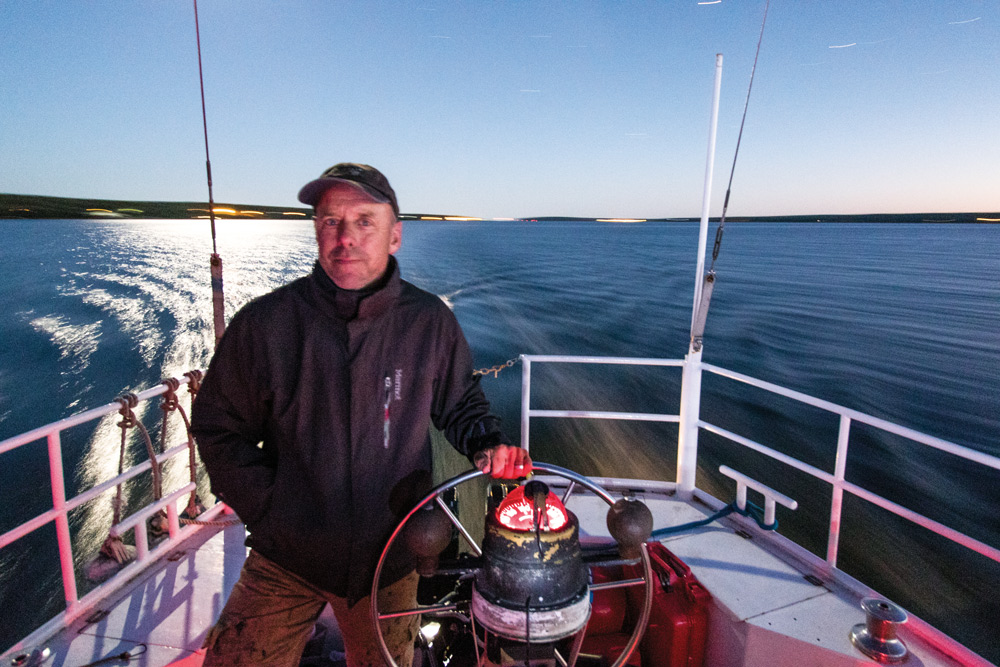
To move in a new direction, he decided to charter sailboats for waterborne photo expeditions. That way, the crew could handle the vessel while he focused on his images.
“I thought it would be cool,” Souders said. “The skipper had the steel boat and all the skills, and the crew made it look so easy. I started to think it might be really fun to do this, to have my own expedition-style boat. I wanted to explore on my own, and no one would be there to tell me no.”
His first expedition boat was a 10-foot Zodiac with a 10-horsepower outboard, which he took from Juneau to the Tracy Arm fjord, 75 miles away. It wasn’t what most people would do, but during several summers in Alaska, the determined photographer used that little watercraft to get close to glaciers, humpback whales and brown bears.
Souders also met his first polar bear, which inspired him to take a journey that would change his life.
In 2012, he traveled to Hudson Bay with the Zodiac. More than 30 miles off Churchill in that little inflatable dinghy, he spotted something moving on the sea ice. It was a young female polar bear, and with her, he captured pure magic.
The bear swam beneath an iceberg and then rose to breathe. She submerged, surfaced again, and then disappeared beneath the ice. Souders was “blindly pressing the shutter cable and hoping that something, anything, might be in focus.”
One photograph from that otherworldly encounter captured the attention of the world. Souders earned the grand prize in the 2013 National Geographic Photography Contest and was named the 2013 BBC Wildlife Photographer of the Year.
It put him on the map. It also convinced him that he needed to return to the Arctic and “tell the story of this wild, lonesome, and dangerous place… finding more photographs that might again capture and illuminate and somehow hold on to the spirit of the ice bear.”
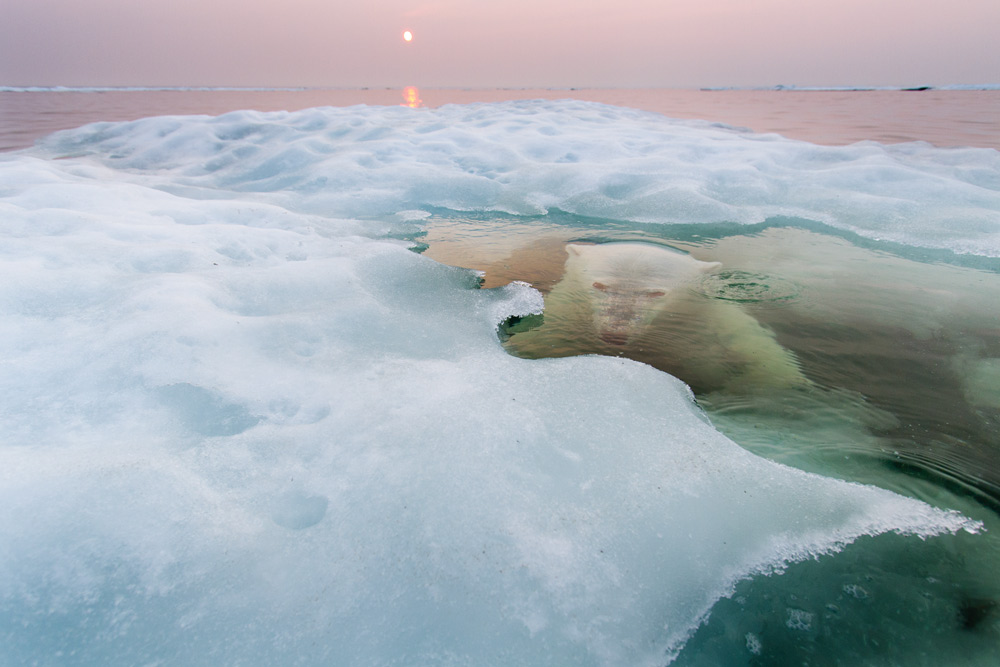
He did go back in 2013 with a flat-bottomed, 22-foot C-Dory named, amusingly, C-Sick . He spent three summers in Hudson Bay aboard her, replacing the “many happy and bear-filled days” of his visions with the brutal reality of singlehanded voyaging on a 600-by-400-mile inland sea. Cruising Hudson Bay occasionally resembled riding “a rollercoaster run by meth-crazed carnies.”
He shares his adventures in the riveting, thoughtful and often humorous 2018 book “Arctic Solitaire: A Boat, A Bay, and the Quest for the Perfect Bear.” Even as the book hit shelves, however, his eyes were already drifting northward again—but he knew C-Sick wasn’t the perfect forever boat for what lay ahead.
“As my Hudson trips were winding down, I decided I wanted to try sailing,” he says. “I knew I had reached the limit of what I could do with a 22-foot boat, and after all the promises I made to God and my wife, I knew I would never again go into waters like that without a keel. A proper sailboat was the way to go.”
Souders found a custom-built Roberts 43 online in 2014, and he purchased the steel-hulled pilothouse motorsailer sight-unseen. At roughly $15,000, it was a lot of boat for the money, and the new owner thought this was “the least worst thing” he could do.
“I’m the poster child for how not to do this stuff,” he says with a grin. “As it turns out, married, middle-aged men can get into a lot of trouble on the internet.”
Assuming that once he had the boat, the rest of the sailing picture would fall into place, Souders traveled to see his new vessel about five months after he bought her. She had been on the hard for years in Shelburne, Nova Scotia, and what he found wasn’t exactly what he expected.
“I had this guy look at it, and he told me, ‘One hard weekend with a steel brush and some paint, and you’ll be ready to go,’” Souders remembers. “I believed it. Wow, was I a knucklehead.”
The boat, which he christened Ocean View , didn’t have any lines or sails aboard. Although she did have old, non-self-tailing winches, there wasn’t a winch to raise the mainsail. And that was just the beginning.
“I quickly learned I had a laundry list of things, without a laundry basket of money,” Souders said. “She didn’t really look like any boat I’d ever seen. She was like a budget apartment with a mast and boom.
“I’d read Nigel Calder’s books and “This Old Boat” and they made it sound like it wasn’t rocket science,” he continued. “But it was to me. I smiled and nodded and took notes. I put labels on everything, including the throttle. I was dumbfounded at what I’d gotten myself into.”
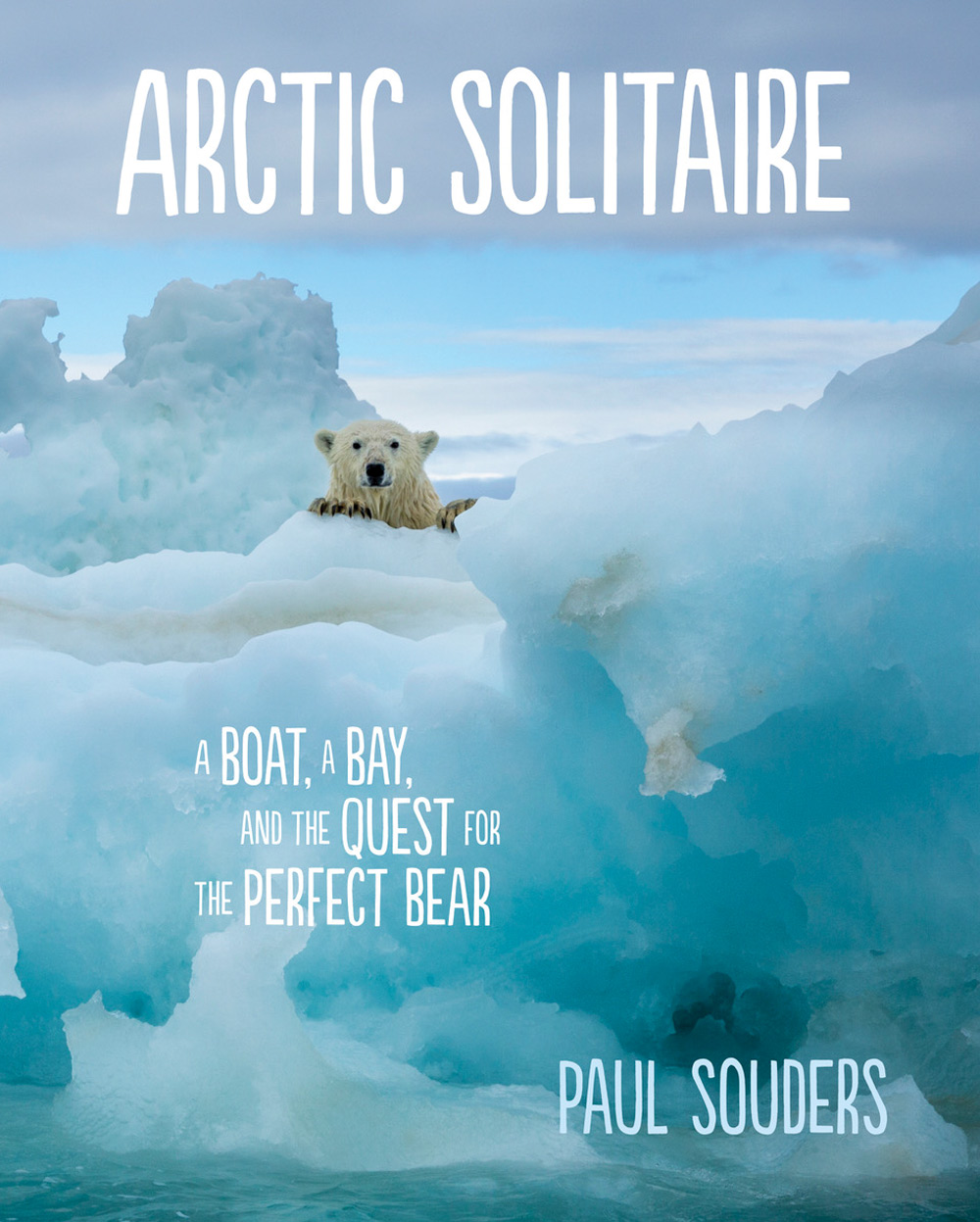
Souders decided to take the American Sailing Association’s ASA 101 class to earn his basic keelboat certification. He says it made all the difference.
“To me, sailing had always been fiddling with ropes and big pieces of canvas,” he said. “I would watch others, who would do it fast without explaining anything. I never really understood it until I went out with an instructor in a little daysailer.”
But, in 2016, it was time for Souders to be fully in charge of his 18-ton motorsailer with decidedly unfamiliar controls. One day, he fired up the 35-year-old Perkins 4-108 diesel, eased the Morse controls into reverse, and nothing happened. He gave her a bit of throttle. Still nothing.
“The south wind pushed her toward the dock all the same,” he writes in a journal entry. “I finally got a bit of movement… trying to steer, in reverse, across the wind, in a full-keel sailboat is an act of futility, at least for the novice, and I managed to swing the stern out and drive the bow into the dock, hitting the pulpit once, twice, against the pilings on the way out. Ocean View limped away like an embarrassed dog.”
During his little outing in Shelburne Harbour, Souders said he was ready to hand over the keys to someone. As no one was on hand, however, he decided he might as well put the sails up and turn the engine off.
“Slowly, gracefully moving across the water… that was magic,” he writes. “I was enchanted.”
In his journal, he noted that Ocean View likely didn’t exceed 2 knots through the water, and tacking through the harbor left a GPS track like a jagged scar. But he was “as happy as I’ve ever been on a boat.”
Souders returned to Nova Scotia in March 2017, still winter in the Maritimes. During his four-week stay, he worked 14 hours a day on the boat, prepping her for the summer’s big adventure.
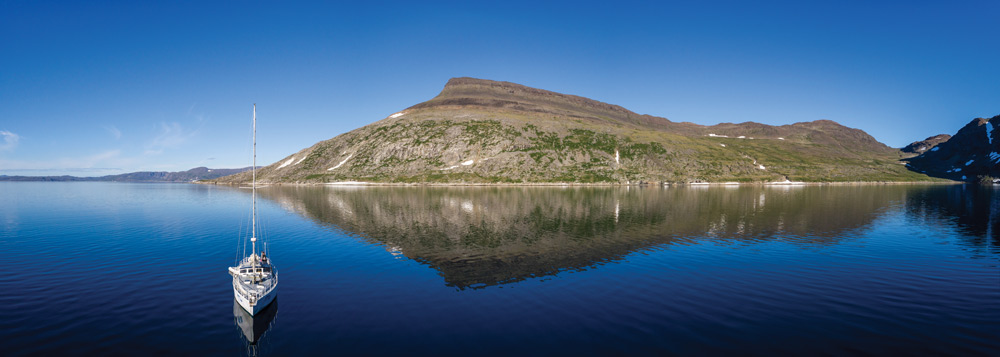
Also in Sailors Among Us
- Making sailing a cottage industry
- Just go sailing
- Teaching sailing one vet at a time
- A circuitous route to the sailing life
- No holds barred
- American sailing dream
- To Alaska, on a very little boat
- They come bearing books
- A family affair
- On a sailing high
Also from Heather Steinberger
- Ludicrous speed on hard water
- A hidden gem beckons
- Rethinking the iron jenny
- A show to know

Find anything, super fast.
- Destinations
- Documentaries
We don't have any additional photos of this yacht. Do you?
Motor Yacht
Polar Bear is a custom motor yacht launched in 2011 by Citadel Yachts.
Polar Bear measures 31.09 metres in length, with a max draft of 1.98 metres and a beam of 8.53 metres.
Polar Bear has a steel hull with an aluminium superstructure.
Polar Bear also features naval architecture by Citadel Yachts.
Performance and Capabilities
Polar Bear has a top speed of 13.00 knots and a cruising speed of 11.00 knots. .
She also has a range of 6,000 nautical miles.
Other Specifications
Polar Bear has a hull NB of 102-01.
- Yacht Builder Citadel Yachts No profile available
- Naval Architect Citadel Yachts No profile available
- Exterior Designer Citadel Yachts No profile available
Yacht Specs
Related news.
Your cart is currently empty.
Translation missing: en.cart.general.order_summary
Your gift note will be delivered via email when you complete your purchase.

Memorial Day Sale is on. Buy more, save more!
- --> YouTube
- Best Sellers
- The Play Boxes
The Play Kit
- All Products
Item added to your cart
Polar bear sailing boat.

Buy More, Save More Sale
10% off $150+ | 15% off $250+ | 20% off $350+
plan tpys, plan toys, tpys, wooden toys, bath toys, toys, wood toys, wooden toys, sailboat, bathtoys
Pairs Well With
Product details.
Dimensions: 4.7 x 3.5 x 3.4 in Weight: 0.3 lb Materials: Designed using PlanWood, a unique PlanToys material that utilizes surplus sawdust and wood scraps to create a sustainable, flexible wooden material. Sustainably made in Thailand using chemical-free rubberwood, formaldehyde-free glue, organic pigments and water-based dyes. Age: 12mo.+
*Final sale, no returns accepted
Cleaning & Care
Rinse clean, wipe, and air dry after use.
Featured collections
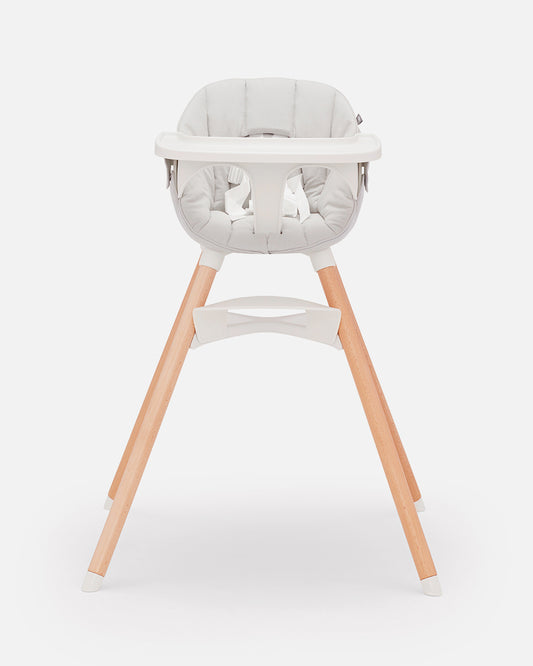
First Bites Full Kit

The Booster

The Play Kitchen
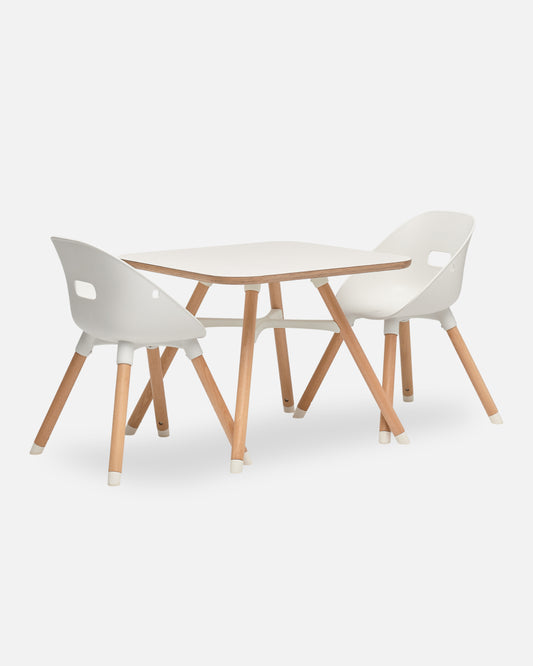
The Play Gym

The Play Box: 0-12 Weeks

First Bites Starter Kit

Follow along @lalo

- Choosing a selection results in a full page refresh.
- Opens in a new window.

« Search holidays
Sailing & Exploring Svalbard
- Vessel : Noorderlicht
- Where : Svalbard, Norway
- Duration : 16 days
- Embark : Longyearbyen Harbour - 3 August 2023, 16:00
- Disembark : Longyearbyen Harbour - 18 August 2023, 09:00
Sorry you’ve missed the boat! This voyage has now sailed. Check out our voyage finder to see what else we have available.
Spend 16 days circumnavigating the Arctic wonders of Svalbard with tall ship Noorderlicht.
Join tall ship Noorderlicht in the Arctic archipelago of Svalbard for an epic 16 day circumnavigation sailing expedition.
Follow in the footsteps of whalers, discover abandoned settlements and watch the spectacular Arctic wildlife with the safety of a trained guide. Navigate vast swathes of ice fields, explore colossal glaciers ashore and make life long memories. This voyage is perfect for the adventure traveller looking for that next bucket list location.
- Skippered sailing
- 16 day circumnavigation
- Private cabins
- Bucket list location
- Polar bears!
- Sail area & highlights
- Life on board
- Travel planning
- What's included
- Boat schedule
Your Sailing Area
Svalbard, norway.
High in the Arctic circle between Norway and the North Pole sits the worlds northernmost icy town of Svalbard. One of Europe’s last great wildernesses, where there are more resident Polar bears than humans, Svalbard is a fairy-tale like but formidable landscape.
Discovering Svalbard under sail with a tall ship is by far the best and most sustainable way to see the very best of this Arctic archipelago. Svalbard has strict tourism policies in place with travellers unable to leave the main town of Longyearbyen without a registered guide. Noorderlicht has been given special permission to sail and explore this magical landscape with a registered guide onboard meaning guests are in safe hands at all times.
Colossal glaciers, ice covered fjords, dramatic snow-peaks and an abundance of Arctic wildlife are a constant reminder of how fragile this wild and rugged world really is. Often referred to as the “land of the midnight sun” when from mid-May to late September, the archipelago sits in 24hour daylight; this epic terrain is certainly not for the faint hearted!
The aim of this epic expedition sailing voyage sis to spend 16 days circumnavigating the island of Svalbard. Below is a rough day-to-day guide of what to expect based on previous voyages but please bear in mind that all itineraries are subject to the weather. As you board, the Captain will have a better idea with updated forecasts of what you can expect from your adventure sailing holiday in Svalbard.
Day 1: Embarkation in Longyearbyen
Climb aboard Noorderlicht in the small snowy town of Longyearbyen – the largest inhabited settlement in Spitsbergen. Enjoy a welcome from the crew and captain, before a delicious first dinner on board while the ship sets course towards Bellsund, where it will anchor for the night.
Day 2: Glacier Fridtjofbreen and the historic sights in the Bellsund
Explore ashore at Midterhuken in the Bellsund where there are fantastic views of the 65 million year old mountain chain of Spitsbergen. During lunch, Noorerlicht will sail to Kapp Toscane where you can enjoy a short walk to Kvitfiskstranda (‘white whale beach’) before setting the sails again towards the Hornsund or the South Cape of the island of Spitsbergen.
Day 3-4: Around the South Cape towards the east of Spitsbergen
If the weather – and ice conditions are favourable, you will visit the Hornsund, one of the most inhospitable and icy fjords of Svalbard.
This fjord is home to many steep glacier fronts with a high chance of encountering seals and belugas. Visit the Polish research station in Isbjornhamna, where we can get information about their scientific wildlife programs.
Due to the currents that converge here, from the Arctic Ocean and the Barents Sea, it is important to plan this Cape crossing carefully. As soon as we arrive in the Storfjorden, we have a good chance of encountering groups of whales. We then sail in a northerly direction to the island EdgeØya – well known for its large reindeer population as well as for its polar bears.
Due to the flat and accessible island, we have the possibility of a landing at Kapp Lee near Dolerittneset (‘Dolerite point’). The wide tundra is dotted with reindeer antlers and whale bones and you can often find arctic foxes and large colonies of kittiwakes here.
Day 5: Visit the impressive Negribreen, Heleysundet.
After breakfast, we will visit Negribreen, one of the largest and most impressive glaciers in Spitsbergen. The glacier has receded significantly in recent decades, but still has the widest calving front on the main island of Spitsbergen. As we approach the glacier, we will encounter blue icebergs, the blue indicates very old ice!
After taking plenty of time at Negribeen, we will attempt to sail through the Heleysundet, a narrow channel notorious for its strong currents. In the channel, there is a nameless bay where only our red sailing ship is known to have anchored. The crew of Noorderlicht has given this bay a name: the ‘Noorderlichtbukta’. Here we have the possibility of a nice walk under and on top of the cliffs of Straumslandet.
Day 6: The famous bird cliff Alkefjellet
Depending on the tide, we leave the Heleysundet to set sail in the direction of the spectacular bird cliff Alkefjellet. We will take our time at this natural wonder viewing the 60,000 short-billed guillemots breeding here. Noorderlicht is small enough to cruise along the base of the cliff, eliminating the need to view it from the zodiac, so sit back and relax to see the seabirds up close.
We will spend the rest of the day sailing in a northerly direction through the Hinlopenstraat. The Hinlopenstraat is a 150 km long strait that separates Spitsbergen and Nordaustlandet and is often difficult to navigate because of the dense pack ice. Once in the Lomfjorden, we will look for an anchorage for the night.
Day 7: Nordaustlandet – the northeastern limit of our trip
After a morning walk in Faksevagen with impressive views over the glacier Gullfaksebreen, we cross the Hinlopen Strait towards the most northeastern island of this trip: Nordaustlandet. This island is largely covered by the two large ice caps – Austfonna and Vestfonna. Compared to the rest of Spitsbergen there are fewer remains of human activity to be found here, due to the isolated location, although we can find traces of Norwegian and Russian influence on the landscape.
We may take an evening walk at the special landmark Kinnvika, where a Swedish-Finnish research station dating from 1957-58 can be visited. The project was abandoned in 1959 when funding ran out, making the 10 vacant wooden buildings now seem mysterious.
Day 8-9: 80 degrees north towards the ‘de Zeeuwse Uitkijck’
During the next two days, we celebrate passing the most northerly point of our journey at a latitude of 80 degrees north. We sail along the island of Moffen, a walrus and bird sanctuary, where we keep a good lookout to see groups of walruses. In this northern area, the ice determines where to sail and where to go ashore.
Possibly during one of these days, we will find an anchorage close to Ytre NorkskØya where we hopefully can land at the’ Zeeuwsche Uitkijck. Here in 1617, whalers from Zeeland built a blubber cookery and were able to keep a good lookout over the sea for whales from the highest point of the island.
Day 10: Whaling history at Smeerenburg
Sailing further on to the West, we proceed to AmsterdamØya, where we can get a good insight into 17th-century whaling. Here you will find Smeerenburg, a former settlement of Dutch whalers that grew into the centre of Dutch whaling in the period from 1617 – 1646. The settlement consisted of warehouses, homes and a blacksmith shop. Horseshoe-shaped ovens were used to boil the blubber of the whales, extract oil which was used for soap and fuel for lamps. Remains of blubber ovens, tombs and houses can still be found here and there.
Day 11-12: The glaciers of Kongsfjord and Krossfjord
Sailing South, we will aim to find the breathtaking blue-green bay of the Magdalenafjord. With rugged and pointed mountain peaks and impressive glaciers, it’s an Arctic paradise.
We sail onwards to the beautiful Kongsfjord and Krossfjord where we will be greeted by the towering face of the “14th July” glacier. Bearded seals often lie to rest on the broken ice floes, and near the glacier, we may find breeding colonies of black-billed guillemots, kittiwakes and puffins.
These fjords offer numerous sights. For example, we may be able to organize a landing on the Blomstrandhalvoya peninsula, where the remains of a marble mine can be seen at Ny London. From this location, we also have a beautiful view of the Tre Kroner, the three iconic mountain peaks that shine through the ice cap.
Day 13: Walruses and a panoramic view on the Prins Karls Forlandet
Today we will start early, sailing a southerly course towards the St. Johnsfjord. To get there we will navigate the Forlandsundet strait. Historically, the Forlandsundet strait has always been a fear for many whalers, because of the Forlandsrevet sandbank on the north side. Due to its shallow draft, Noorderlicht is one of the few ships that can navigate these waters although the crew will need full concentration.
If we can complete this passage, we will make a landing at Murraypynten and walk the hills with a beautiful panoramic view of the rugged mountains and glacial landscapes of Spitsbergen.
In the afternoon we will continue the journey south, towards the St. Johnsfjord, where we will anchor in the sheltered bay.
Day 14: Ghost Town in Soviet-style: Barentsburg
Depending on the availability of a berth in Barentsburg, we will sail towards the Russian mining settlement where we will arrive towards the end of the afternoon.
From the dock where our ship is moored, we will first have to climb some 140 wooden steps before we enter the main street. Here we will see that the Soviet period has left its mark. There is a life-size bust of Lenin in the middle of the town, billboards with photos of workers and modernist Soviet buildings. Furthermore, you can find the world’s most Northerly brewery and find the Pomor museum. In the evening you can enjoy the locally brewed beers and Russian snacks, together with part of the crew of Noorderlicht.
Day 15: Sailing towards Longyearbyen
In the morning we hope to make a final landing in Colesbukta, before sailing back to Longyearbyen.
Day 16: Goodbye Noorderlicht
After a hearty breakfast, you can disembark by 09:00.
All voyages for Noorderlicht
Noorderlicht.
Guest berths: 20 Rig: Schooner
Originally built in 1910, Noorderlicht has a colourful history and has spent much of her life sailing the Baltic Sea and exploring Svalbard. With various refits, hull extensions and rigging reconfigurations, she now sails as a graceful two-masted schooner taking guests on sustainable adventure holidays in Svalbard.
With comfortable accommodation for up to 20 guests in private twin cabins, Noorderlicht offers guests whale watching and wildlife expeditions exploring the Arctic waters of Northern Norway & Svalbard . Her size and draft mean she can reach some of the most remote areas of Svalbard so she is a great way to discover the hidden gems that this breathtaking part of the world has to offer.
Low impact and environmental travel go hand-in-hand with Noorderlicht’s ethos. Her ability to set sail and explore this part of the world is the best way enjoy the beautiful unspoiled nature.
In the early 90’s she was refitted to become a charter vessel and so her accommodation below decks was given careful consideration. She has ten comfortable twin cabins that all share four bathrooms. The galley and downstairs seating area sits in the middle of the ship with another seating area and bar in the deck-house.
Noorderlicht is sailed by her loving owners along with a friendly crew who are all well trained to sail the wilderness of Svalbard. They invite guests to get involved with sailing Noorderlicht but it is certainly not mandatory!
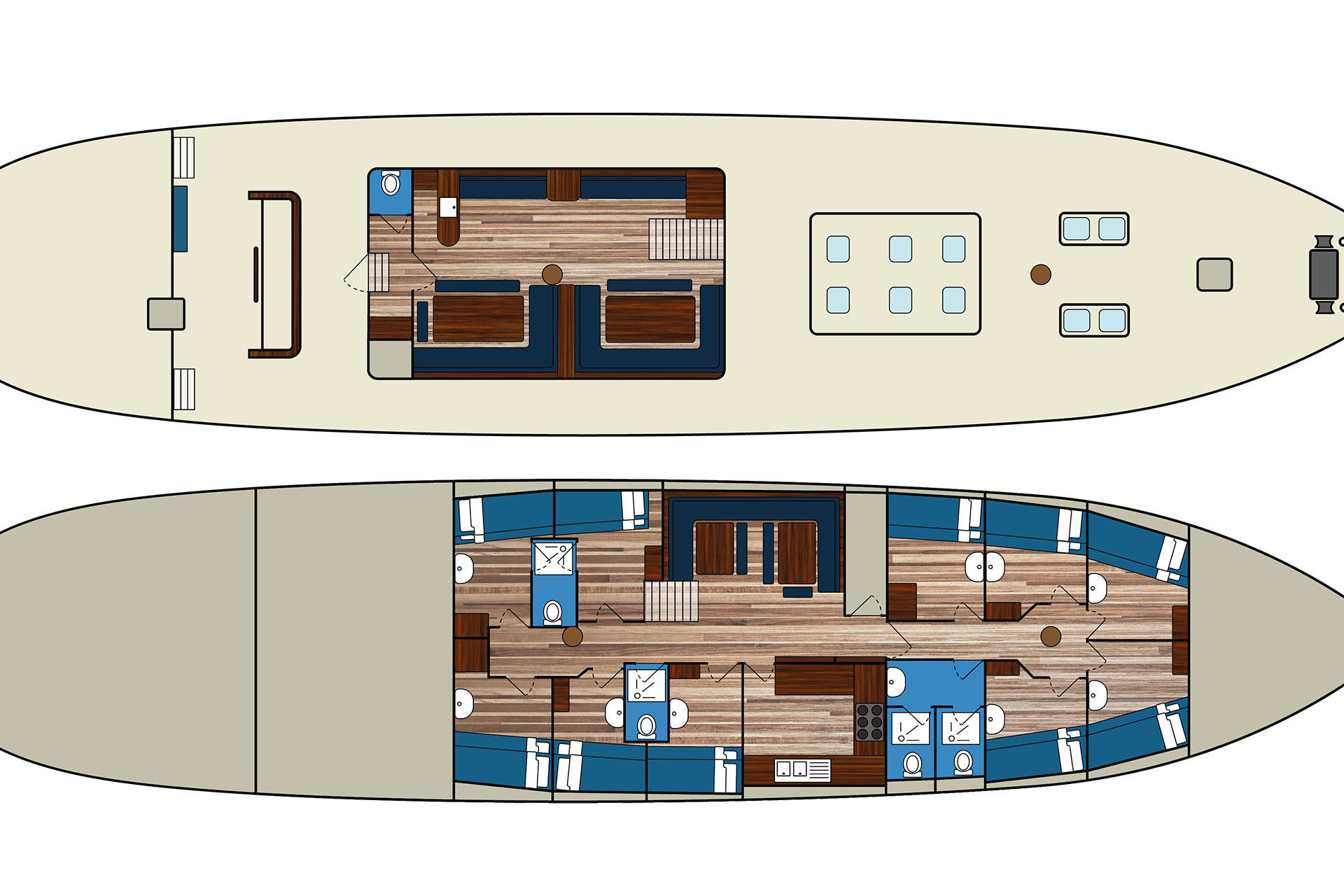
Life on board Noorderlicht
Sailing and exploring the wilderness of Svalbard with expedition vessel Noorderlicht is an experience of a life-time. Exploring this fascinating landscape from the comfort of your own tall ship is a bucket list holiday, perfect for the adventure traveller.
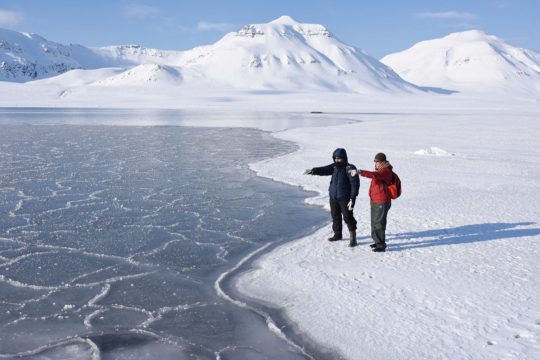
Noorderlicht has been sailing and exploring Svalbard for over 10 years so her crew are well versed in the nuances of this remote and wild location. On all Svalbard expeditions, not only is there a full crew but a qualified and verified guide is present at all times. Guests are not permitted to go ashore without the guide due to the risk of Polar bears and the harshness of the environment. The guide is permitted to carry a shotgun for the safety of the guests and crew. Guests will be briefed upon arrival but ultimately, the crew’s aim is to make this adventure a fun, awe-inspiring and unforgettable experience.
Sleeping and Relaxation
The interior of Noorderlicht is authentically decorated giving an informal, cosy and nautical atmosphere below decks. There are spacious seating areas in the upper-and lower deck salon for all the passengers. There is a small board library available filled with informative lecture about the concerning area, but also some fine novels. Besides there is a small, cozy bar in the upper deck salon.
The sleeping area is situated at the lower deck in 10 twin cabins. All cabins have upper and lower berths, a built-in closet, a washbasin with cold and warm water and a mirror. In your cabin you will also find 220V power outlet to charge your electronics. Furthermore the ship has 5 toilets and 4 showers which are for common use.
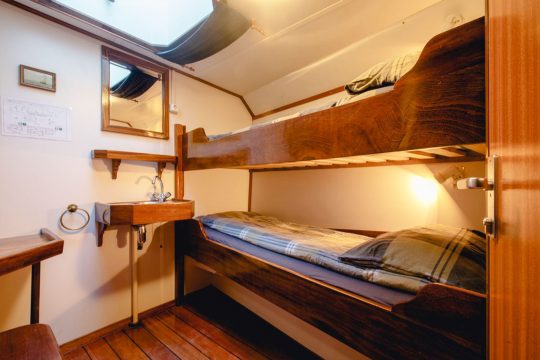
If we have learned anything from our years of experience on sailing ships, it is the importance of good and nutritious food on a ship! Although the Arctic area gives rise to limitations on the possibilities and supplies of the food onboard, our professional cook will prepare you excellent meals from the international kitchen three times a day.
To Note…
Full kit information will be given at the time of booking or can be requested beforehand- please just email us at [email protected]
A 50% deposit is required at the time of booking with the final balance due 90days before departure.
Noorderlicht has limited space for possessions so please be considerate and travel as light as possible. There is no storage for rigid cases so please bring your items in a soft bag or rucksack. We recommend a travelling light principal with lots of lightweight, easy drying layers.
1) Dress in layers. In polar regions it is advised to use the 3-layer principle; a base layer, a warm mid layer, and a water repellent outer layer.
2) Don’t overdress. If it is too warm you start sweating which can cool you down too much.
3) Use natural materials such as wool. Avoid cotton. Synthetic fabrics designed for cold weather are also good.
4) Be careful with down, when it gets wet it loses all its insulation value. Primaloft or polar fleece are good options.
5) Wear loose layers. Insulation is basically pockets of hot air, so if you dress without room for those air pockets to fill with warm air it can be cold. Only the base layer can be a snug fit, but make sure it is not hindering your blood flow. Avoid super tight shoes and socks.
6) Keep hands and feet dry. You usually lose a lot of heat via your extremities (hand and feet). Mittens are always warmer than gloves. Make sure there is a waterproof outer layer.
7) Wear a hat! A lot of lost body heat can come from your head. By making sure that your head is warm you will also notice a difference for the rest of your body.
Don’t forget the wind! Wind chill can make 0 degrees feel like -20. So make sure your outer layer is both wind and waterproof.
- Rubber boots (VERY IMPORTANT) we request that you bring a pair of knee-high rubber boots. These boots will be used in virtually all shore landings. Pull-on rubber and completely waterproof boots of at least midcalf height with a strong, ridged non-skid sole is ESSENTIAL for landings. We often walk in water and on icy, slippery surfaces, so even standard snow boots, hiking boots, and low rubber boots are not satisfactory.
- Sturdy hiking boots are optional. Most hike/landings will be done with the rubber boots. Occasionally people switch to hiking boots.
- Comfortable shoes are useful to wear around the ship.
- T-shirts to wear inside the vessel, as temperatures are comfortably warm
- Warm pants or even ski pants, which can be worn over long underwear. Thick ski pants can be too warm for long hikes but are great on deck.
- Waterproof trousers, such as Gore-Tex, to be worn over regular pants.
- Thermal underwear of wool, silk or polypropylene
- Sweaters or polar fleece jacket of medium weight.
- Turtlenecks work well as extra layer.
- Mittens and gloves (and more than one pair), such as thin wool or polypropylene gloves that can be worn underneath your mittens
- Woolen hat and scarf to protect your ears and neck
- Warm socks that are tall and sturdy, layered over a thinner pair of silk, polypropylene, or wool socks. We prefer wool since it does not contain any odour.
- Waterproof/windproof jacket (waterproof above all) with an attached hood that can be worn over your under layers with reasonable comfort
ACCESSORIES
- Waterproof (or resistant) backpack with shoulder straps for keeping your hands free and your camera (and other gear) dry
- Earplugs, in case you share your cabin with a snorer or the engine is on
- Sunglasses of good quality, as the glare from the water and surrounding snow/ice can be severe even when the sky is overcast
- Binoculars for viewing all the beautiful landscapes and wildlife
- Camera with plenty of memory cards or film
- Head lamp for spring or autumn trips aboard Noorderlicht
How cold is it in Svalbard?
Temperatures vary from April through to September. Depending on the time of year you can expect lows of -30 and highs of +10. It is hard to predict but appropriate clothing is paramount.
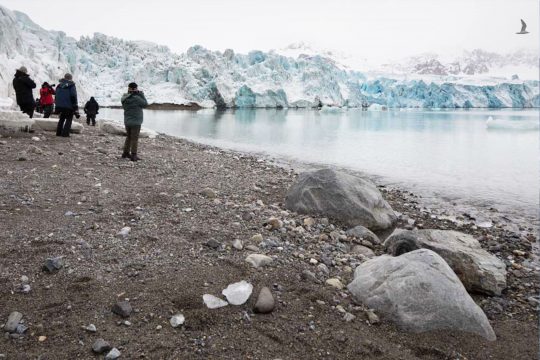
What’s included
- Full board (breakfast, lunch, dinner, snacks and hot drinks)
- All bedding (pillow, sheets & duvet)
- Full crew plus tuition
- Marina and fuel fees
- All tender trips to and fro the boat
What’s not included
- Any flights
- Transit hotels
- Travel to and from the boat on the day of joining/leaving
- Travel insurance
- Sailing Insurance (Please read our Sailing Insurance page for more information)
- Personal expenses
Travel insurance notes
As this is an active adventure holiday, we advise that everyone has the appropriate personal accident travel insurance whilst onboard in addition to standard travel insurance which would cover you in the time between making your booking and departing for your adventure. These policies can sometimes be combined so please check with your travel insurance provider.
Please read more information on our Insurance guidelines page.
This voyage will be not more than 12miles offshore.
Yes, all meals on board are included in the price. (Breakfast, lunch, dinner and hot drinks) Alcohol is not included.
We can cater for vegetarian, dairy-free and gluten-free. We cannot cater for a vegan diet.
There is an honest bar for alcohol and soft drinks.
10 x twin bunk cabins with shared bathrooms.
Yes, each cabin has a deck hatch.
4 shower rooms and an extra single toilet.
All bedding is provided but please bring your own wash towels. Micro-fibres are great - quick-drying and lightweight for travelling.
No, please do not bring one. The sea breeze makes a great natural alternative!
No, Noorderlicht does not have laundry on board.
Most definitely!
Tips are not mandatory but are welcomed by the crew.
Dutch/English
No! It's time to disconnect from the modern tech and reconnect with nature! When within shore range, you should be able to reach 4/5G. Please make sure you have international roaming set up on your data plan.
Yes. There are power points in all cabins. Please bring 2-pin European adaptors.
Noorderlicht is often at anchor so you'll need to be comfortable climbing in and out of the tender dinghy and climbing up the boats step ladder over the gunwale - there will always be a crew member to steady.
No, absolutely not! Just a lust for adventure.
Everyone reacts differently but we recommend if you are at all worried to take some medication 24 hours before departure.
Yes. No children younger than 11. Above aged 16 is fine, but ages 11-16 we must check directly with the boat on a case by case basis.
Travel Planning
From: Longyearbyen Harbour
To: Longyearbyen Harbour
To see where the ports are, along with your likely sailing area, please view the sail area & highlights.
Fly into Oslo or Tromsø to get a connecting flight to Svalbard. There are several flights a day into Longyearbyen airport from Oslo and Tromsø in Norway. Your easiest route from the UK t o Longyearbyen (LYR) Airport for Svalbard is from London Heathrow via Oslo with airline SAS.
Taxis and buses meet each incoming /outgoing flight, even the ones in the middle of the night and will stop at the marina on request, and t he airport shuttle service stops at all hotels in the centre.
STAY IN SVALBARD:
There are plenty of places to stay in Svalbard. Try Gjesthuset 102, Mary-Ann’s Polarrigg or Funken Lodge.
Please note that you need a guide to travel anywhere outside the town of Longyearbyen due to the risk from polar bears.
Guest Reviews
More holidays in norway or svalbard.
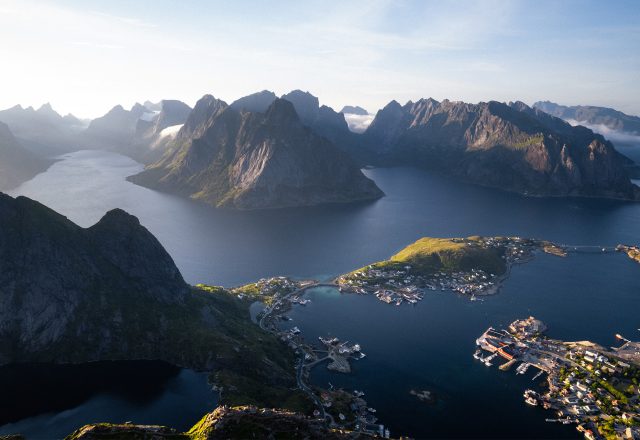
Sailing the Lofoten Islands
- 6 June 2024, 8 days
- Vessel: Humla
- Port: Norway
- Board type: Full Board
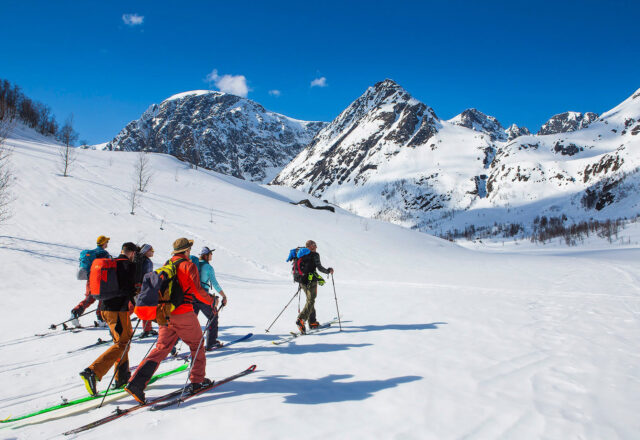
Ski & Sail Expedition in Svalbard
- 1 June 2025, 9 days
- Vessel: Valiente
- Port: Svalbard, Norway
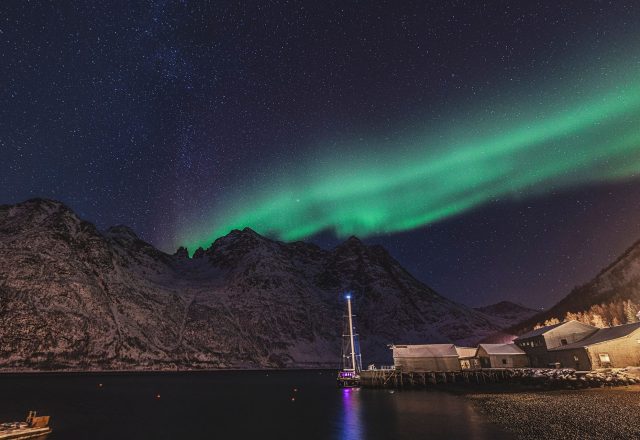
Whale watching & Northern Light Sailing in Norway
- 5 November 2025, 5 days
- Port: North Norway
- 22 July 2024, 8 days
- 3 June 2024, 9 days
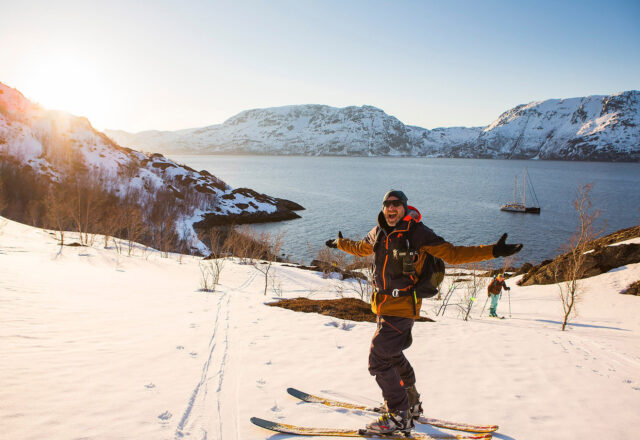
Ski & Sail in the Lofoten Islands
- 21 March 2025, 5 days
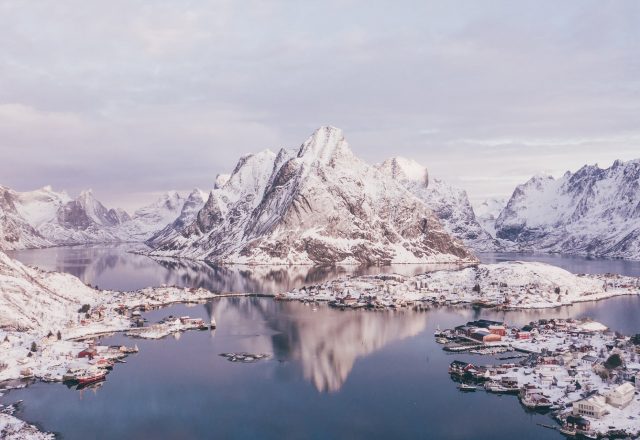
Winter Sailing in the Lofoten Islands
- 12 February 2025, 7 days
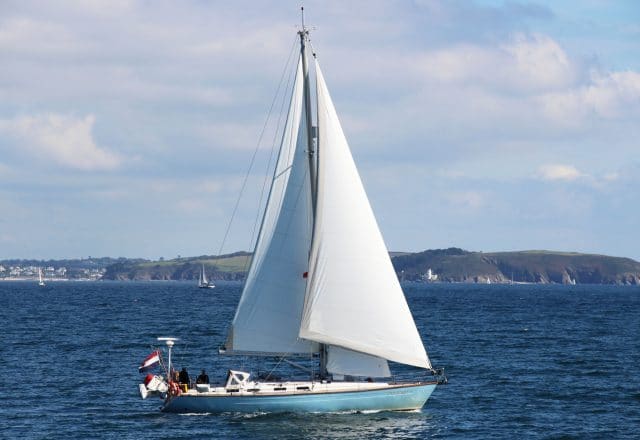
Sailing the Norwegian Fjords
- 4 August 2024, 14 days
- Vessel: Cherokee
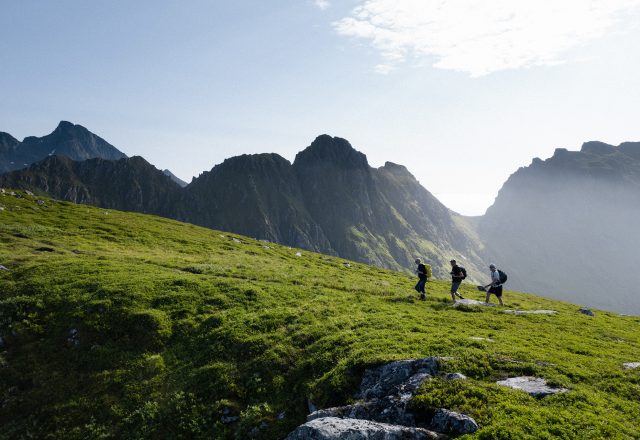
HIKING AND SAILING ON THE WEST COAST OF NORWAY
- 5 August 2025, 8 days
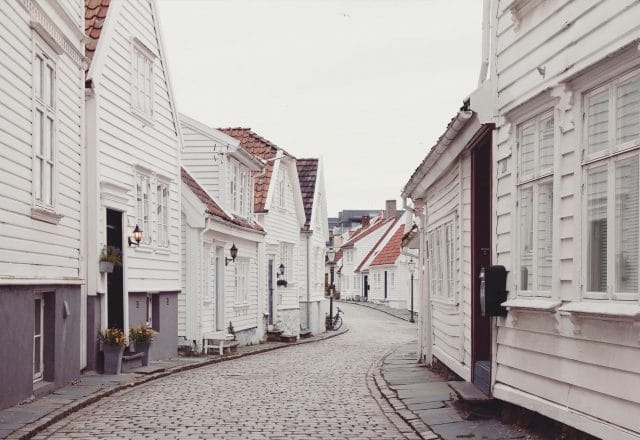
- 6 September 2024, 9 days
More holidays on Noorderlicht
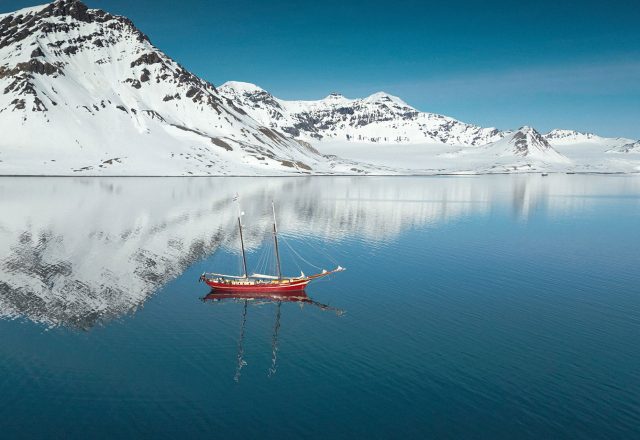
Sustainable Sailing in Svalbard, Norway
- 18 June 2024, 11 days
- Vessel: Noorderlicht
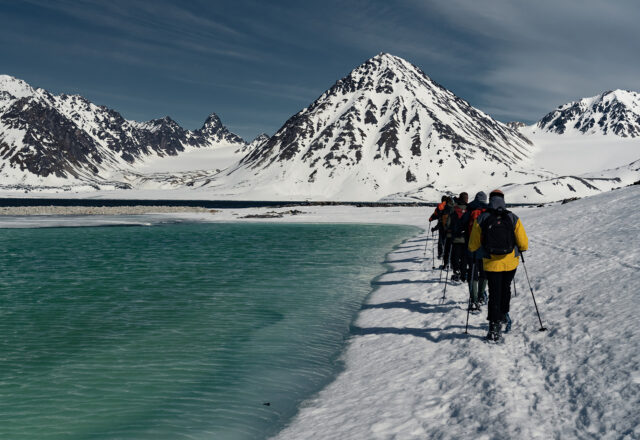
Sailing Expedition in Svalbard; 16 day circumnavigation
- 15 August 2024, 16 days
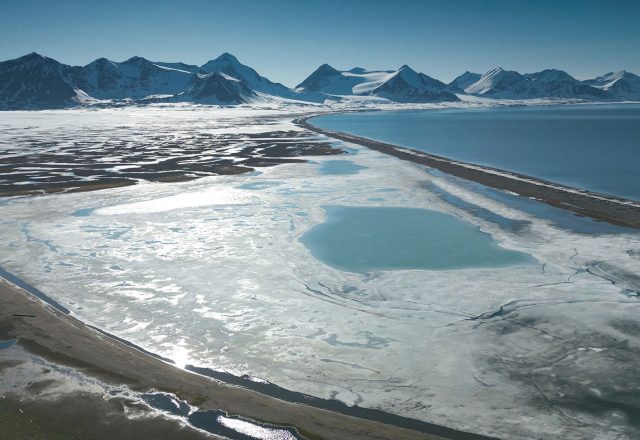
Adventure Sailing in Svalbard, Norway
- 1 September 2024, 8 days
- 23 July 2024, 8 days
- 31 July 2024, 16 days
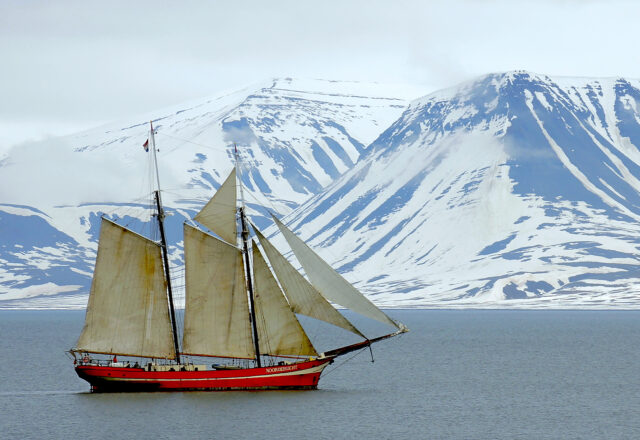
Sailing in Svalbard; Arctic Spring
- 2 June 2024, 8 days
- 9 June 2024, 8 days
Latest from our journal
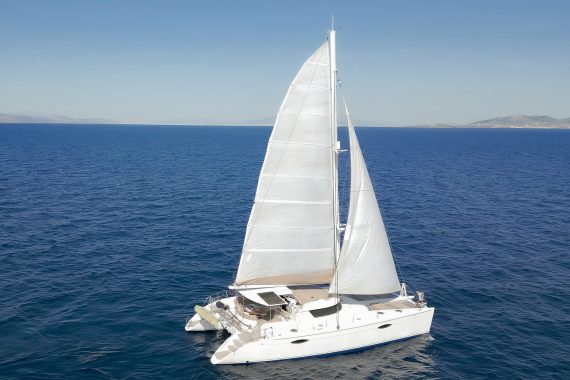
Greece Catamaran Charter Holidays
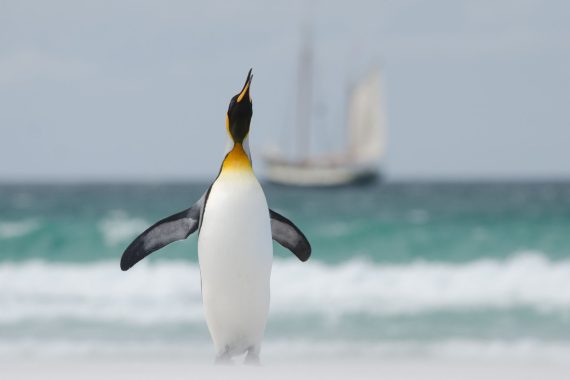
A guide to wildlife in Antarctica
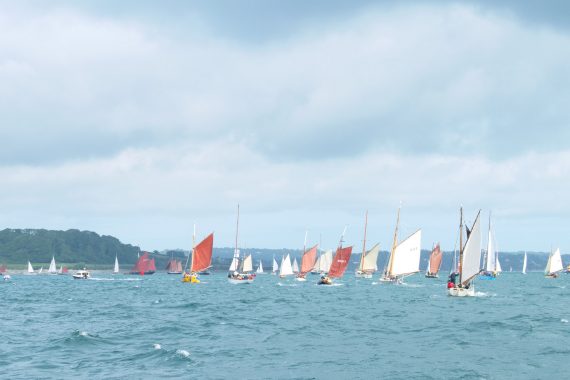
Why you should join us for the Falmouth International Sea Shanty Festival!
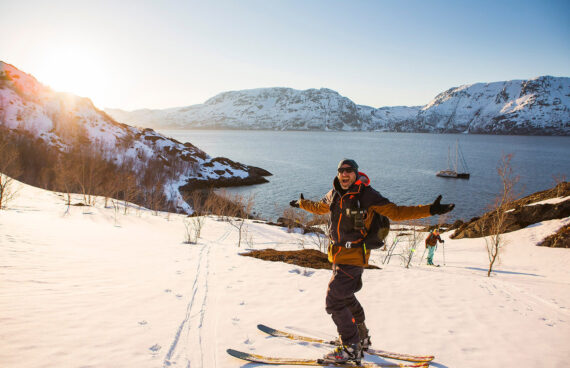
A guide to Svalbard Ski and Sail Holidays
Sign up for email offers, as featured in.

Never see this again please
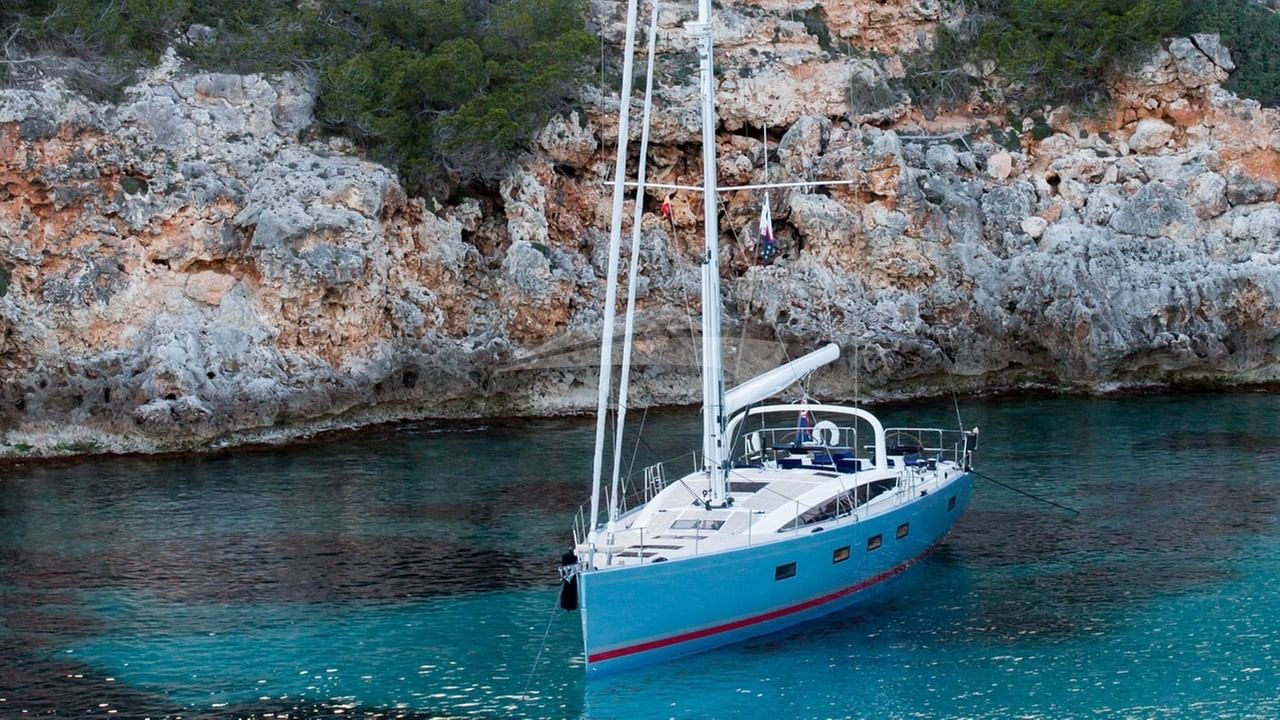
2015 Jeanneau 66ft / 20.1m
Unavailable

POLAR BEAR private yacht
The luxury sailing yacht POLAR BEAR is a private yacht and is not available to charter.
POLAR BEAR was built by Jeanneau and delivered to her owner in 2015.
POLAR BEAR can accommodate 8 guests in 4 cabins consisting of a primary suite with a queen size bed and en-suite bathroom facilities located aft, 2 cabins with a double bed and en-suite bathroom facilities and a cabin with 2 single beds .
Amenities on board include Air Conditioning, BBQ, Coffee machine, Outdoor shower, Light fishing gear, Indoor audio system, iPod dock, Outdoor audio system, Sun pads, Swim platform, TV saloon, Water maker and Wi-Fi.
An extensive list of further amenities and water toys can be seen under the features and amenities section.
You can view alternative similar sailing yachts for charter , or alternatively contact your Yacht Charter Broker for information about renting an alternative luxury charter yacht.
- Air Conditioning
- Coffee machine
- Outdoor shower
- Light fishing gear
- Indoor audio system
- Outdoor audio system
- Swim platform
- Water maker
- Inflatable Watertoys
- Floating mats
- Paddleboards
- Tube - towable
- Water skis - adult
- Windsurfer - Adult
- Diving by arrangement
- Snorkeling Gear
- 12ft/3.8m Williams 100hp
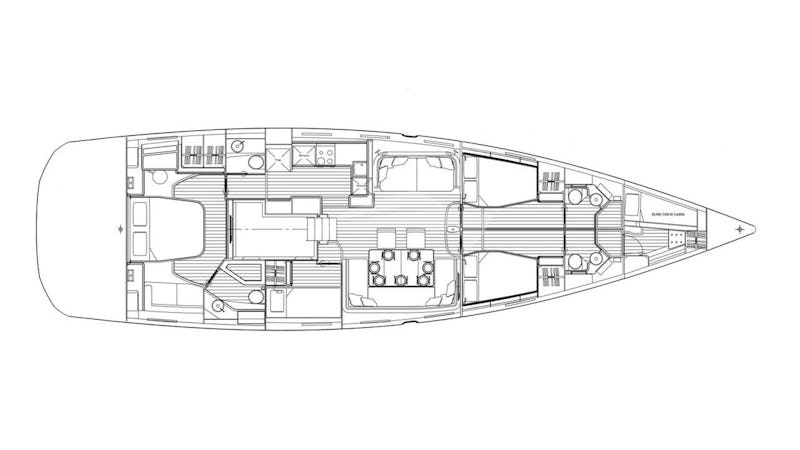
Matt Fraser

Matt took to dinghy sailing aged 12, since then adventures on the water have been an inevitable part of his life. Thriving on new experiences; Matt had tried his hand at windsurfing, wake-boarding, snowboarding, taken on a 2,300 mile kayak trip and is even a qualified skydiver. He turned his attention to a career in yachting four years ago and is a qualified RYA Yachtmaster Ocean. Matt’s first yachting jobs saw him spending summers running flotilla holidays on the Turkish Turquoise Coast and throughout the Greek Aegean. Last summer together with Naomi, Matt ran luxury charter holidays aboard Lagoon 52, Aurous sailing around the Ionian islands. Always calm, approachable and found with a smile, Matt will listen to your needs.
Naomi Hawes
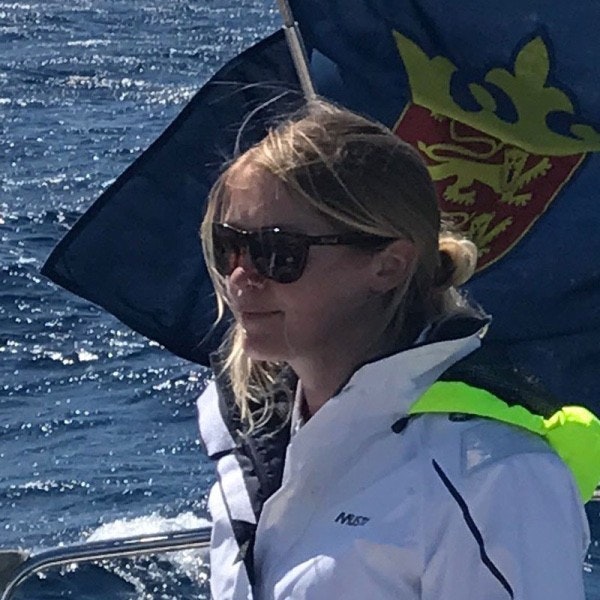
It wasn't until summer 2014 that Naomi decided to start a career in yacht hosting and since then she has been fortunate enough to sail amongst the Dodecanese Islands in Greece, the Gulf of Hisaronu in Turkey, the Saronic and Argolic Gulfs near Athens and the North and South Ionian as well as gaining some tidal experience whilst completing her RYA Day Skipper on the Isle of Wight. Cooking for family and friends has always been a passion of Naomi's and she loves to experiment with different cultural cuisines, this combined with a season catering in a 4 star chalet has given her the skills to create mouth-watering dishes as onboard chef. Her friendly and enthusiastic personality has lent itself to hosting roles and she hopes to welcome you aboard Polar Bear this summer. Matt & Naomi have worked as a team for the last 3 years and are very excited to have joined Polar Bear in the Balearic islands and to spend this summer exploring the western Med with you.
Destinations

Frequently Asked Questions
How many guests on board polar bear.
POLAR BEAR can accommodate 8 sleeping guests on board in 4 cabins, with the ability to cruise with up to 8 guests and entertain groups up to 8 guests while at anchor or moored at a marina.
Legal Disclaimer
Sailing Yacht POLAR BEAR is displayed on this page for informational purposes and may not necessarily be available for charter. The yacht details are displayed in good faith and whilst believed to be correct are not guaranteed, please check with your charter broker. Charter Index does not warrant or assume any legal liability or responsibility for the accuracy, completeness, or usefulness of any information or images displayed as they may not be current. All yacht details and charter pricing are subject to change without prior notice and are without warranty.
U.S. Customs & Border Protection
The yachting industry has no global listing service to which all charter yachts must subscribe to, making it impossible to ascertain a truly up-to-date view of the market. Charter Index is a news and information service and not always informed when yachts leave the charter market, or when they are recently sold and renamed, it is not always clear if they are still for charter. Whilst we endeavour to maintain accurate information, the existence of a listing on Charter Index should in no way supersede official documentation supplied by the representatives of a yacht.
Specification
Popular related yachts, east mediterranean.

West Mediterranean
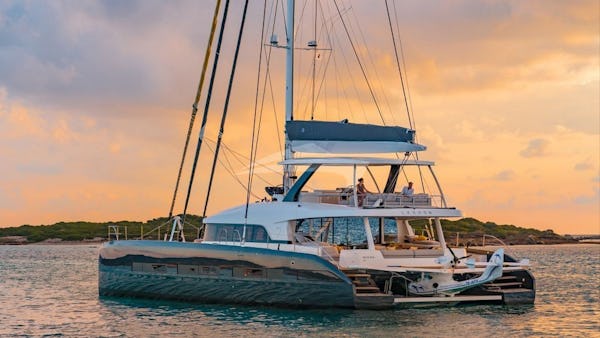

- Active Play
- Better Aging
- Blocks & Construction
- Games & Puzzles
- Learning & Education
- Pretend Play
- ⠀⠀● Dollhouse
- ⠀⠀● Kitchen
- ⠀⠀● PlanWorld
- ⠀⠀● Role Play
- Push & Pull
- Victorian Dollhouse
- Dollhouse Figure
- Child Development
- Sustainability Report 2022
- Help Center
- Worldwide Office
- Archive Sale
- Create an account

Sailing Boat - Polar Bear
Sailing Boat - Polar Bear is backordered and will ship as soon as it is back in stock.
- American Express
- Diners Club
Factors for Child Development
Product Info
These little sailboats come from the Arctic and Antarctic! Includes a Walrus, Seal, Penguin and Polar Bear that are ready to swim in your bath or water play scenarios.
- Sail off to sea with the Polar Bear Sailing Boat!
- Perfect for the bath or any water-play scenario
- Designed using PlanWood, a unique PlanToys material that utilizes surplus sawdust and wood scraps to create a sustainable, flexible wooden material
- Sustainably made in Thailand using chemical-free rubberwood, formaldehyde-free glue, organic pigments and water-based dyes.
Package Dimension (W x L x H):
4.53 in X 3.74 in X 3.74 in
11.51 cm X 9.5 cm X 9.5 cm
Product Dimension (W x L x H):
4.72 in X 3.46 in X 3.98 in
12 cm X 8.8 cm X 10.1 cm
Package Weight:
*the biggest part:, award information:.

- Share on Facebook
- Share on Twitter
Customer Reviews
Volume Discount offers No offers found for this product. This is visible only for you in Admin Mode You can create a volume discount from the app - Addly
You're visiting us from %country%, redirect to %redirect_store%?

The global authority in superyachting
- NEWSLETTERS
- Yachts Home
- The Superyacht Directory
- Yacht Reports
- Brokerage News
- The largest yachts in the world
- The Register
- Yacht Advice
- Yacht Design
- 12m to 24m yachts
- Monaco Yacht Show
- Builder Directory
- Designer Directory
- Interior Design Directory
- Naval Architect Directory
- Yachts for sale home
- Motor yachts
- Sailing yachts
- Explorer yachts
- Classic yachts
- Sale Broker Directory
- Charter Home
- Yachts for Charter
- Charter Destinations
- Charter Broker Directory
- Destinations Home
- Mediterranean
- South Pacific
- Rest of the World
- Boat Life Home
- Owners' Experiences
- Interiors Suppliers
- Owners' Club
- Captains' Club
- BOAT Showcase
- Boat Presents
- Events Home
- World Superyacht Awards
- Superyacht Design Festival
- Design and Innovation Awards
- Young Designer of the Year Award
- Artistry and Craft Awards
- Explorer Yachts Summit
- Ocean Talks
- The Ocean Awards
- BOAT Connect
- Between the bays
- Golf Invitational
- Boat Pro Home
- Superyacht Insight
- Global Order Book
- Premium Content
- Product Features
- Testimonials
- Pricing Plan
- Tenders & Equipment

On board Pangaea with adventurer Mike Horn
Mike Horn , the professional adventurer who sails his 35-metre ketch to the world’s most beautiful – and inhospitable – corners, speaks to Caroline White
If you’re going to venture to the iciest ends of the earth by yacht you need a chunky steel boat, right? A floating tank sounds about right for navigating icebergs. Well, not according to professional explorer Mike Horn , who chose a nimble 35-metre aluminium sailing yacht to be his constant companion on more than a decade of global adventures. “Aluminium is not as resistant as steel,” he says, “but when I have a massive impact my boat just changes shape – aluminium bends, while steel tears.”
There’s very little that’s conventional about the yacht Pangaea – or about Horn himself. Born in 1966 in Johannesburg, he grew up an outdoorsy, competitive child and went on to study human movement science at Stellenbosch University. He joined the army and served in Angola. Returning from service aged 24, he felt a need to get out and explore away from a politically isolated South Africa. He ended up about as far away as you could get, in Château-d’Oex in the Swiss Alps, where he still resides.
From here he launched a dazzling array of adventures over more than three decades: he’s traversed the South American continent solo by climbing high into the Peruvian Andes, then hydrospeeding (essentially bodyboarding) 7,000 kilometres down the Amazon to the Atlantic; he spent 18 months circling the Equator by foot and sail – the world’s first unaided solo circumnavigation; for more than two years he travelled around the Arctic Circle without motorised transport; and he walked for two months in the total darkness of the Arctic winter, dragging his own sledge from the Arctic Cape in Russia to the North Pole.
At this point in his adventuring career, the idea for his own explorer yacht was born. “I needed to build a vessel that could take me to any place in the world,” he says. “It had to have a shallow draught to sail up the Amazon or over coral, and also a hull strong enough to go into the ice.” What he determined to build was “a light but structurally very strong sailing vessel with ketch rigging”. With a limited budget, he went to the American industrial corporation Alcoa and negotiated enough free aluminium for the build in return for branding rights. It was designed by a Brazilian-Belgian architect and built in the favelas of São Paulo, Brazil. “I wanted a project where we could employ people with a trade, like welders, electricians, carpenters, plumbers, hydraulic specialists,” says Horn. “There’s a lot of guys out there with amazing skills that cannot find work, so we kind of rounded them up.”
With the hull under way, he went to Europe to gather sponsors – he picked up Mercedes-Benz and the Richemont Group (which owns Cartier, Van Cleef & Arpels, Panerai, Chloé, Net-A-Porter and more). What they were supporting was not so much the boat as a plan. “The idea was to build a boat to take young people around the world to show them the beauty of the planet, and then teach them through science how to conserve that natural intact beauty,” says Horn. The project, also called Pangaea – the name of the pre-historic supercontinent – took two children from each continent on an extraordinary five-year adventure, using the boat to install ecological and social projects around the world.
This initial adventure completed, Horn turned Pangaea towards other goals. Departing from the Yacht Club de Monaco in 2016 with a send-off from Prince Albert II, the Pole2Pole expedition was a two-year circumnavigation via the South and North Poles. “ Pangaea drops me off on one side of the Antarctic, I solo ski across the continent while my boat sails around the world and picks me up on the other side,” he recalls. “Then, I get back on to the boat, sail to the North Pole as far as I can into the pack ice, get off the boat and walk across the North Pole. The boat sails through the Northeast Passage above Russia to pick me up on the other side.” He racked up a couple of records along the way: the longest unsupported solo north-to-south traverse of Antarctica; and the first full crossing of the Arctic Ocean via the North Pole. They also took Pangaea further north than any sailing vessel in history.
But aside from plaudits, what Horn took from the experience was a concern for the state of nature at the top of the world. “I didn’t see a single polar bear,” he says. “In 2006, when [Norwegian explorer Børge Ousland] and myself did the first ever winter expedition from Russia to the North Pole, we saw polar bears every third or fourth day. A polar bear even sat on the tent on top of my stomach with me inside the sleeping bag.”
The reason for the new lack of bears, he says, was the thinning ice. “A polar bear needs solid ice to hunt on.” They had therefore retreated to Siberia, Canada and Alaska where they were attacking the people and dogs of the Inuit – and getting shot in return.
Horn decided to return to the Arctic in 2020, despite the pandemic, “because I wanted to see life again”. Covid-19 also offered a unique opportunity to record whale songs in the region. “A whale that’s hunted is stressed, and through whale songs, you can record a stressed whale. And when there’s no hunting, you can record a whale that just swims freely. The only opportunity in the history of our planet to compare these data was now, during Covid. Never before have human beings [and hunting] shut down like this.” As well as monitoring local wildlife, Horn had a hair-raising experience on the trip, when an iceberg flipped while he was climbing it.
Horn has learned a thing or two about ice on his adventures. Don’t look for nice big flat plates of ice, he says, look for cracks that you can poke the nose of your boat into (assuming you don’t have an ice-breaker). The way Pangaea works her way through ice is to ride up on to it and crack it with her weight and momentum. For this purpose she has a knife-sharp bow, weight positioned up front, a reinforced impact zone and naval architecture that redistributes the force of a collision. “In the winter when it’s cold, the ice becomes rock hard but it can easily break. If you’ve got a boat going above and hitting it, it cracks, breaks up into small bits and drifts away,” he says. “If you take that same thickness of ice at the end of summer when it’s all soggy, the moment the boat falls onto the ice, the ice gives way but doesn’t crack. It creates slush.”
If you have a boat the engine of which is cooled by seawater, he says, it will suck up the slush, this will break the filters and your engine will, ironically, overheat. Pangaea , therefore, operates a closed cooling system with 1,200 litres of glycol (antifreeze).
Navigating in ice requires calculation and planning as well as force and judgement. “We get the ice charts and it gives us information, but it’s delayed information,” he says. They therefore make calculations based on the time satellite images were taken and estimated drift. They also – rather more simply – have a crew member up the mast at all times while navigating. “To be able to know where there’s open water and where there’s ice far ahead is not easy, so you’ve got to look at the clouds,” says Horn. “If you have a lot of white ice in front of you, the light reflects from the ice and there will be white clouds on the horizon. When white cloud turns into grey cloud, that means the light no longer reflects from the ice, but from water. And that’s what the guy on the mast is looking for.”
For anyone planning an Antarctic expedition, Horn sensibly suggests that just “taking somebody that knows the ice is going to make his life so much easier”. Better still, “Take your boat to South Georgia, and then get on a boat [an experienced charter or tour boat] that would allow you to enjoy what’s happening, and not be stressed with the risk of losing your boat and your life.” He’s serious on this point. “Your life can become very short when you travel there. It doesn’t matter how much money you have, nobody can get to you. So, respect nature and nature will respect you.”
What’s next on Horn’s agenda? He’ll be getting off the boat to climb K2; returning to the Amazon, the place where his career as a professional explorer started; and sailing south to Patagonia to explore the icecaps and mountains. It seems likely he’ll crack those challenges with as much ease as a plate of Arctic ice.
“I was looking at this iceberg from far away. It was one piece of ice in the ocean and it was such a beautiful pyramid,” says Horn. He was sailing 35-metre Pangaea in the Arctic Ocean last year and suggested to his friend that they climb it, knowing there was a chance it could move. “If the wind catches an iceberg at the right angle it sails like a boat, because it’s got a ‘keel’ deep in the water.” When they melt at the bottom, they become top heavy and, at that point, they are also liable to flip.
Pangaea approached the berg and the two clambered on to its near-vertical side. As they began to climb, Pangaea reversed – and that was when the problems started. “The prop wash from the engines pushed the bottom of the iceberg,” says Horn. They didn’t feel it moving right away – they were too close to the pivot point – but those on the boat could see what was happening and shouted to them. The ice was falling on top of them.
View this post on Instagram A post shared by Boat International (@boatinternational)
“I thought, OK, I’ve got a down jacket on that’s full of air. I’m going to fall into the water and straight away come out. And when the iceberg comes down at that stage, I’m going to be crushed.”
His solution was to stick the two ice axes he was carrying up above his head to take the force. When the iceberg hit the water, his friend was ejected to the side, but Horn, who was closer to the middle of the ice wall, was pushed under. “The water is quite clear. You can see the ice just darkening everything above your head. I said, ‘Shit yeah, it’s done.’”
He somehow managed to get out to the side. But that was not the end. “Now you’re in the Arctic Ocean with crampons, ice axes, climbing boots, no life jacket and the clothes suck all the water. You’re going to get pulled down to the bottom of the ocean.” Knowing that this scenario was a possibility, Horn had already prepped his engineer to have the tender ready to spring into action, and luckily the crew managed to fish them out in time.
Will he be climbing any more icebergs? “The most stupid thing I’ve ever done in my life,” he says. “I’ve been a professional explorer for 30 years. I know that the risks I take can cost me my life. I’m not somebody that does what I do to die – I do what I do because that’s what makes me feel alive.”
This feature is taken from the April 2021 issue of BOAT International. Get this magazine sent straight to your door, or subscribe and never miss an issue.
More about this yacht
More stories, most recent, from our partners, sponsored listings.

IMAGES
VIDEO
COMMENTS
GUESTS. 10. POLAR BEAR, a 31.09 m Motor Yacht built in the United States of America and delivered in 2011, is the flagship of Citadel Yachts. She is the only Aleutian 102 model. Her top speed is 12.5 kn and she boasts a maximum range of 4500.0 nm when navigating at cruising speed, with power coming from two Caterpillar diesel engines.
Arctic cruises are among the surest ways to spot polar bears in the wild, but as an old Inuit saying goes: "Before you have seen a polar bear, a hundred bears have seen you." A captain on an ...
We then sail into Northwest Spitsbergen National Park. Take in the stunning Arctic scenery as we scout for polar bears, Arctic foxes, and Svalbard reindeer. You'll also have the chance to see colonies of Brünnich's guillemot and kittiwakes. Crossing the 80th parallel north. We plan to circumnavigate Spitsbergen and attempt to sail beyond ...
POLAR BEAR is a 26.82 m Motor Yacht, built in Italy by Sanlorenzo and delivered in 2018. She is one of 65 SX88 models. ... POLAR BEAR is currently sailing under the United States of America flag, the most popular flag state for superyachts with a total of 1626 yachts registered. She is known to be an active superyacht and has most recently been ...
ITALIA YACHTS Veloce Powerboats Performance Sailing Yachts FRONT RUNNER CENTER CONSOLES HYLAS MOTOR YACHTS CUSTOM CONSTRUCTION ... 2019 Sanlorenzo SX88 POLAR BEAR MODEL: SX88 BUILDER: Sanlorenzo YEAR BUILT: 2019 LOCATION: Miami FL ASKING PRICE: $4,450,000 DESIGNER: N/A HULL: Composite CATEGORY: ...
SVALBARD POLAR BEAR EXPEDITION. Exclusive Expedition Cruise with only 12 Guests on board a luxury expedition ship. Book now for summer 2025! Start/end: Longyearbyen, Svalbard ... Departing from Longyearbyen the yacht will sail through Isfjorden, the gateway to the west coast of Svalbard. Almost the full spectrum of Svalbard's history, geology ...
The 31.08m/102' expedition yacht 'Polar Bear' was built by Citadel in the United States. Guest Accommodation. Polar Bear has been designed to comfortably accommodate up to 10 guests in 5 suites comprising two VIP cabins. She is also capable of carrying up to 3 crew onboard to ensure a relaxed luxury yacht experience. Range & Performance
Legendary sailing photographer Rick Tomlinson leads a wildlife expedition sail in Svalbard searching for polar bears and stunning scenery to capture TAGS: Adventure monohull Top stories
Others buy a yacht to embark on the voyage of a lifetime. The owner of 56-metre sailing yacht Rosehearty talks to Sam Fortescue about their epic adventure to the Arctic. For centuries, the Northwest Passage has been a byword for mystery and epic endeavour. Only in recent decades has the Arctic ice cover retreated sufficiently for a few weeks ...
Ashore, specialized members of your expedition staff, known as "bear guards", will carry firearms to use as an absolute last resort in case a polar bear attacks. On our Lindblad sailing, one guide ...
Sailing and other adventures. Explore the archipelago of the Lofoten and Vesteralen, Ski remote mountains in the Lyngen Alps, search for polar bears in Svalbard or sail around the icebergs in Greenland, Bylgia will bring you there and be your floating basecamp. Learn More.
Svalbard Polar Bear Sailing Expedition. In August, we offer a photography expedition to the Norwegian archipelago of Svalbard, located deep within the Arctic Circle. ... The boat has 9 cabins, 3 twin cabins, and 6 single-room cabins. All beds are made ready and bed linen and towels are provided for each guest. All cabins have private facilities ...
This little PlanToys Polar Bear Sailing Boat comes straight from the arctic! Sail off to sea on an imaginative adventure in the bath, at the lake, or by the ocean. Designed using PlanWood, the boat is waterproof and perfect for water play experiences and encourages fine motor skill development. Suitable for children ages 12 months and older.
Owner story: In Svalbard, visiting the polar bears. Ocean and adventure sailor Kari „Ruffe" Nurmi was the first Finn to sail around Svalbard, a Norwegian archipelago in the Arctic Ocean, in a fiberglass boat - a BAVARIA 300. Here is his story…. published on 09 January 2018.
Sailing with polar bears. 2019 June 1. By Heather Steinberger. Paul Souders needed a motorsailer to take him to the cold waters where the subjects of his photography live, so he learned how to sail. S eattle resident Paul Souders didn't start out as a sailor. In fact, he didn't really start out as a water guy at all; he was simply a ...
Polar Bear is a custom motor yacht launched in 2011 by Citadel Yachts. Design. Polar Bear measures 31.09 metres in length, with a max draft of 1.98 metres and a beam of 8.53 metres. Polar Bear has a steel hull with an aluminium superstructure. Her exterior design is by Citadel Yachts. Polar Bear also features naval architecture by Citadel Yachts.
Pairs Well With. Seal Sailing Boat. $13.50. Product Details. Cleaning & Care. Sail off to sea with the Plan Toys Polar Bear Sailing Boat! Made with PlanWood that is waterproof and perfect for bathtub or outdoor play.
Finally, we make it to 80 North, after spending the last 6 weeks in Svalbard up in the high Arctic. We learn a lesson in not trusting the charts and sail thr...
One of Europe's last great wildernesses, where there are more resident Polar bears than humans, Svalbard is a fairy-tale like but formidable landscape. Discovering Svalbard under sail with a tall ship is by far the best and most sustainable way to see the very best of this Arctic archipelago.
The luxury sailing yacht POLAR BEAR is a private yacht and is not available to charter. POLAR BEAR was built by Jeanneau and delivered to her owner in 2015. POLAR BEAR can accommodate 8 guests in 4 cabins consisting of a primary suite with a queen size bed and en-suite bathroom facilities located aft, 2 cabins with a double bed and en-suite ...
Polar bear checks out sailing yacht in northern Labrador View article at http://lancasteronline.com/article/local/590956
Specifications. Test Report (ASTM) Test Report (EN71) SKU: 5712. Sailing Boat - Polar Bear. These little sailboats come from the Arctic and Antarctic! Includes a Walrus, Seal, Penguin and Polar Bear that are ready to swim in your bath or water play scenarios.
↓ JOIN THE UMA NATION ↓For Discord Benefits, weekly behind-the-scenes, early videos, and bonus content: https://www.sailinguma.com/uma-nation↓ COLLAB↓ Chec...
Sailor and adventurer Mike Horn talks about his experiences on board 35 metre sailing yacht Pangaea. Sailor and adventurer Mike Horn talks about his experiences on board 35 metre sailing yacht Pangaea. SEARCH. The global authority in superyachting. ... A polar bear even sat on the tent on top of my stomach with me inside the sleeping bag." ...